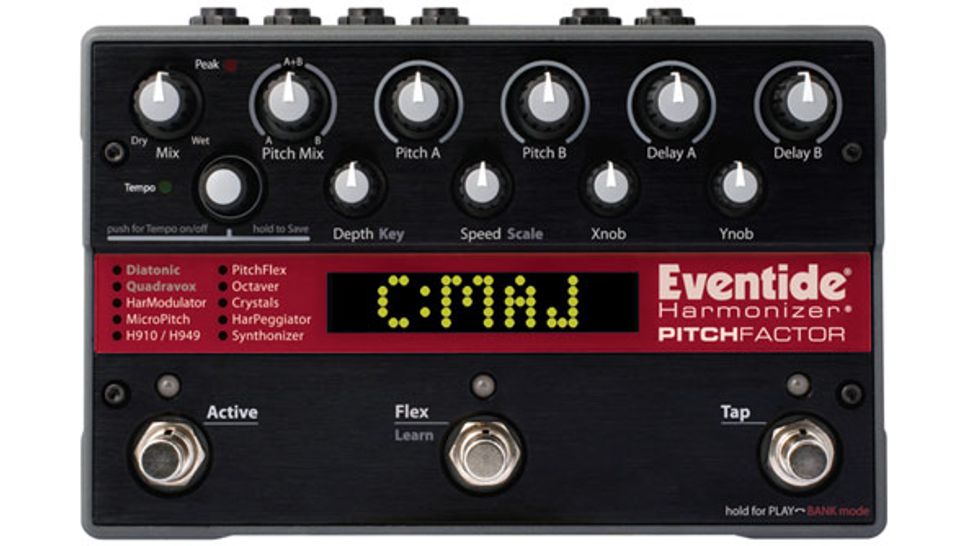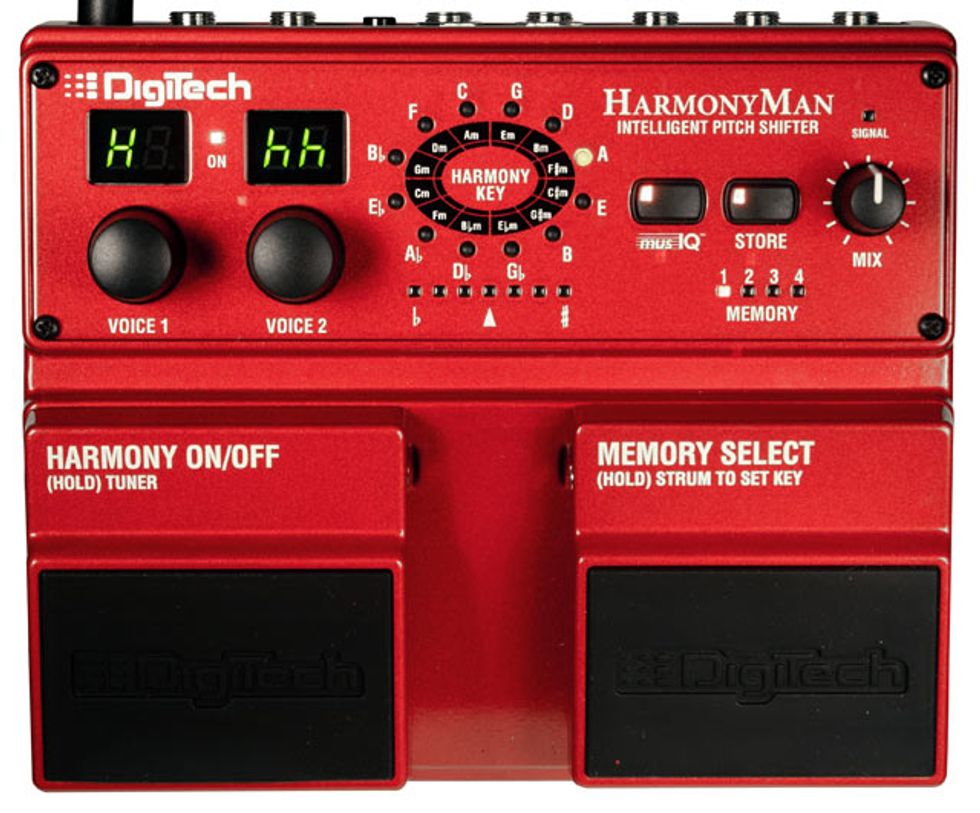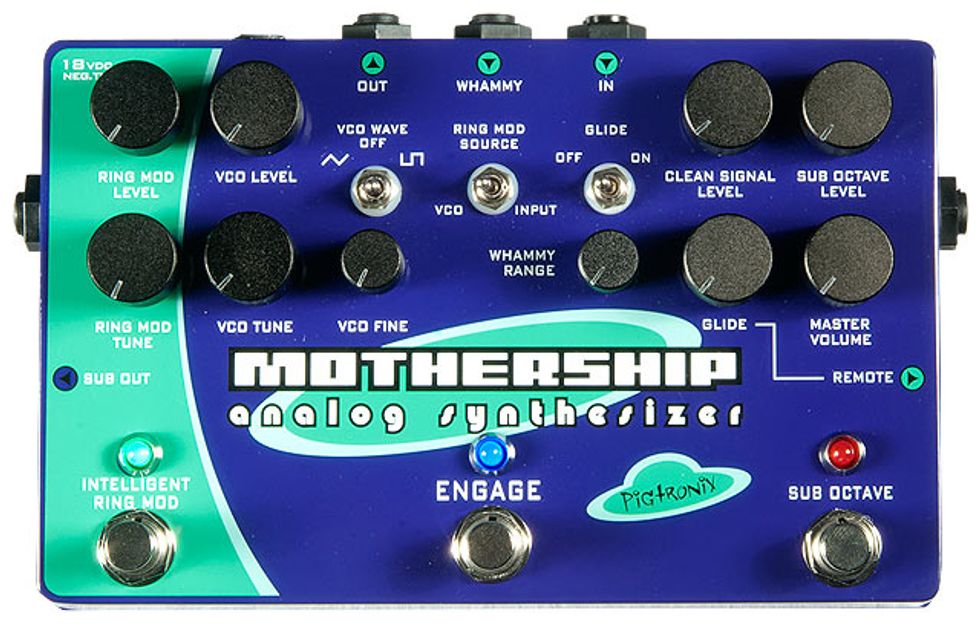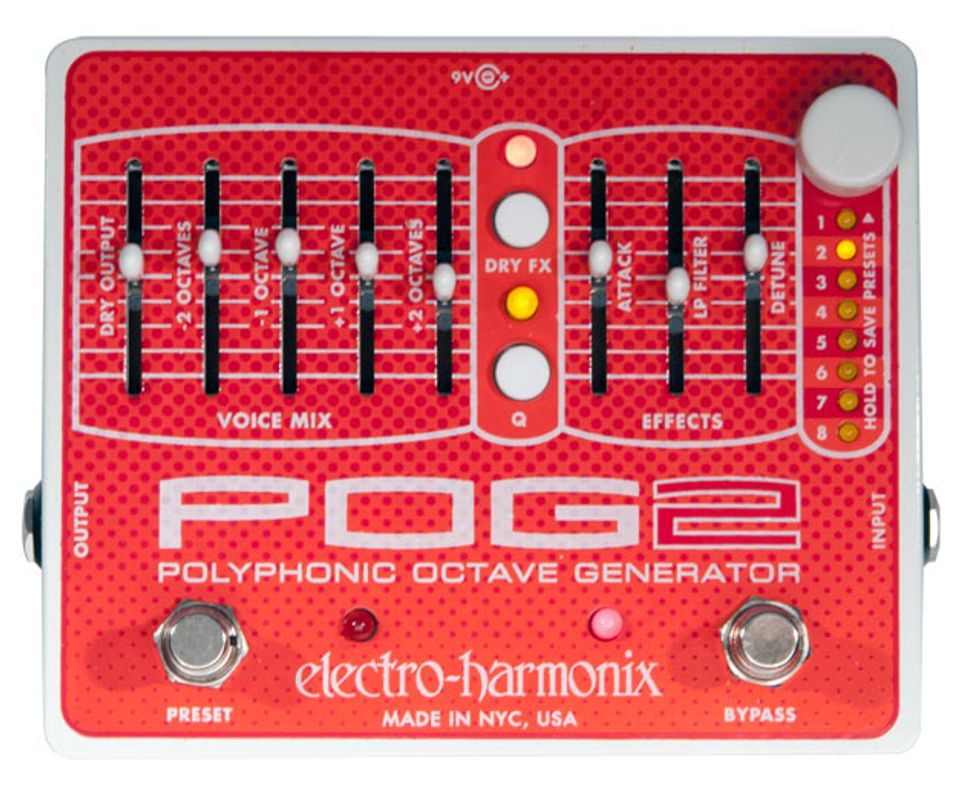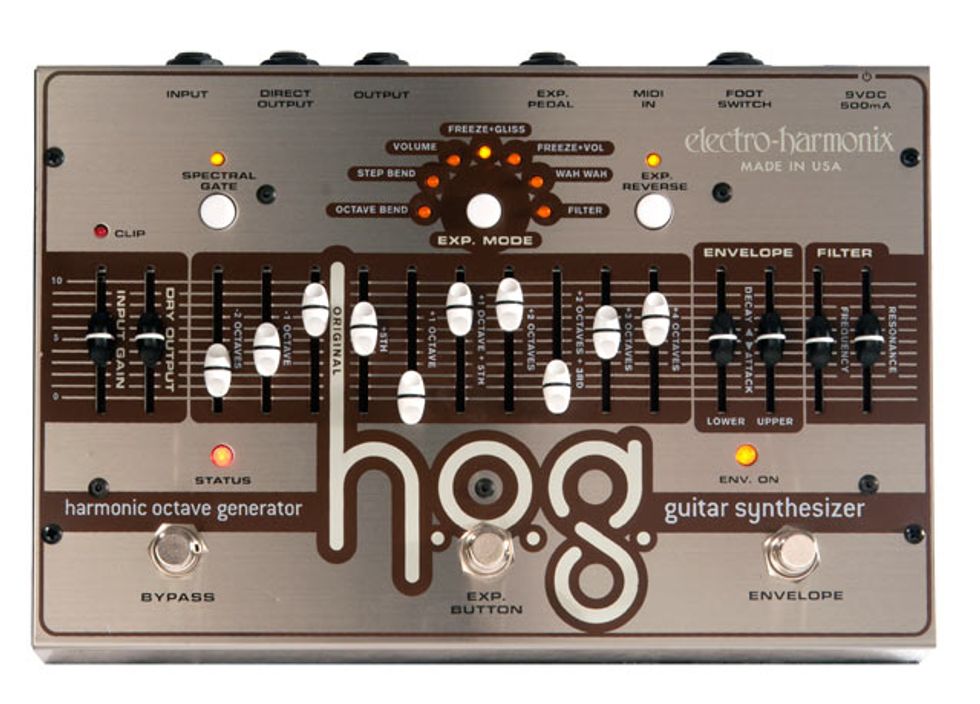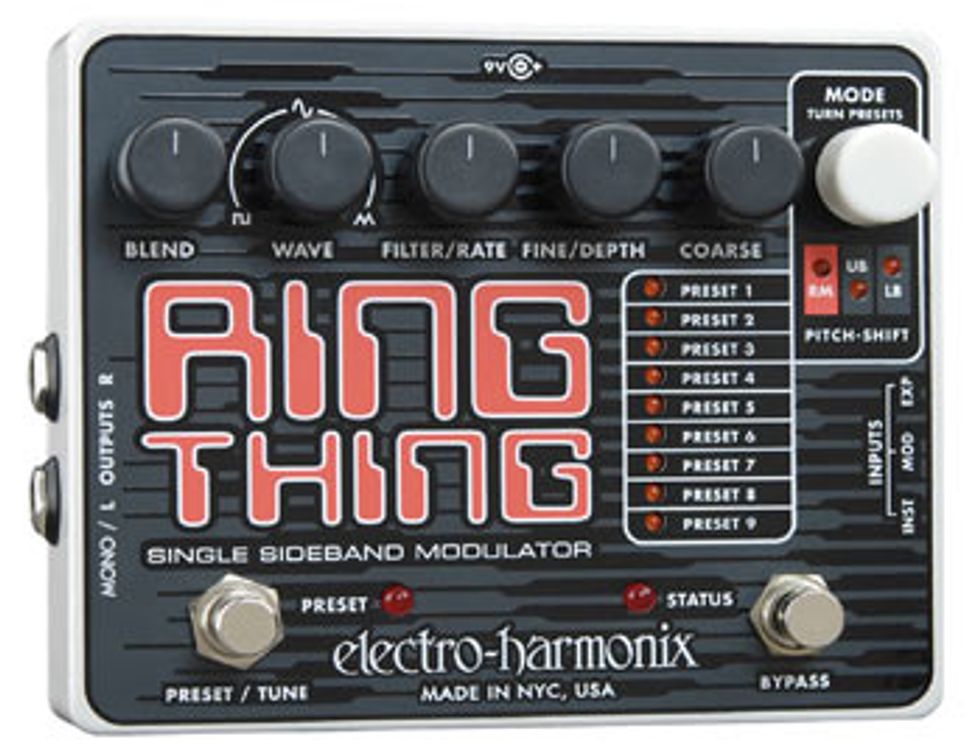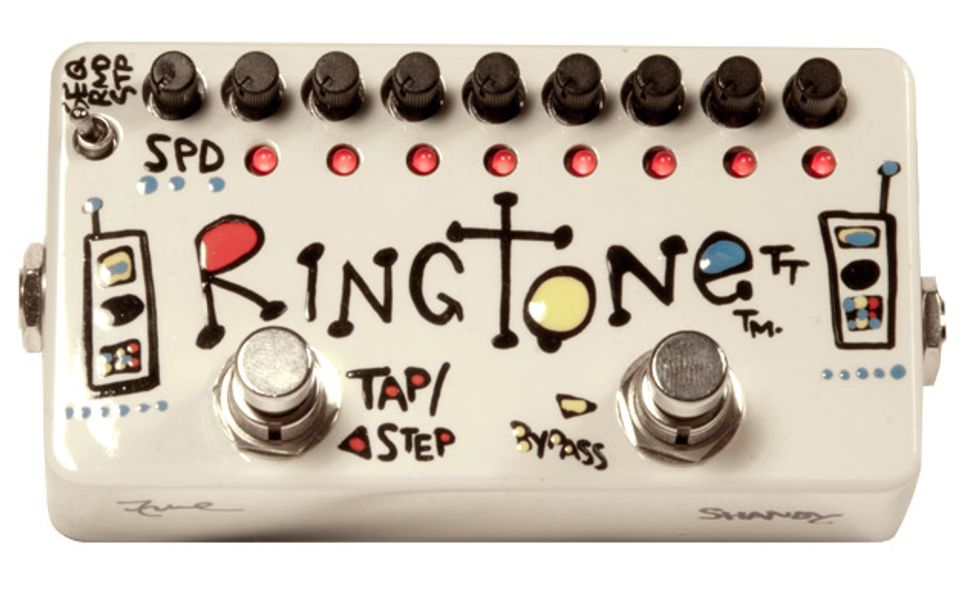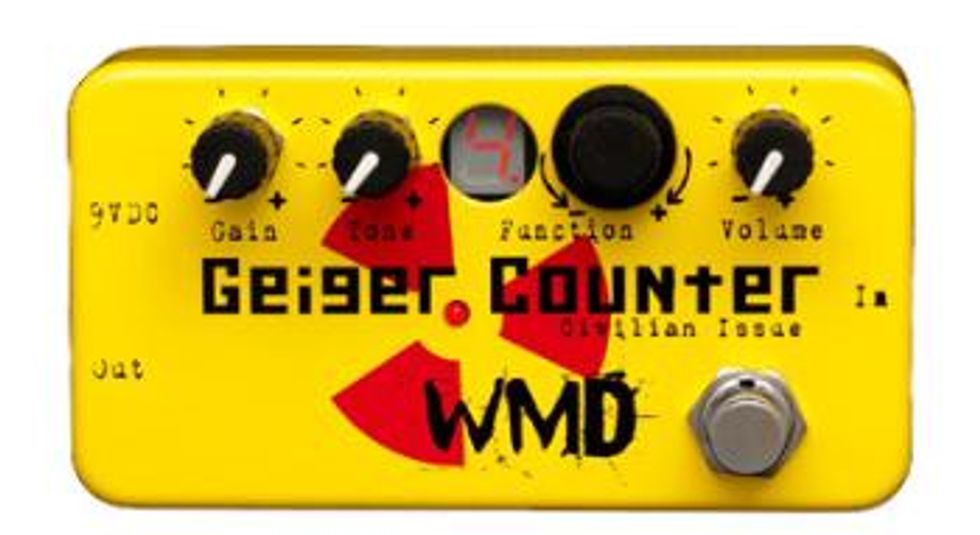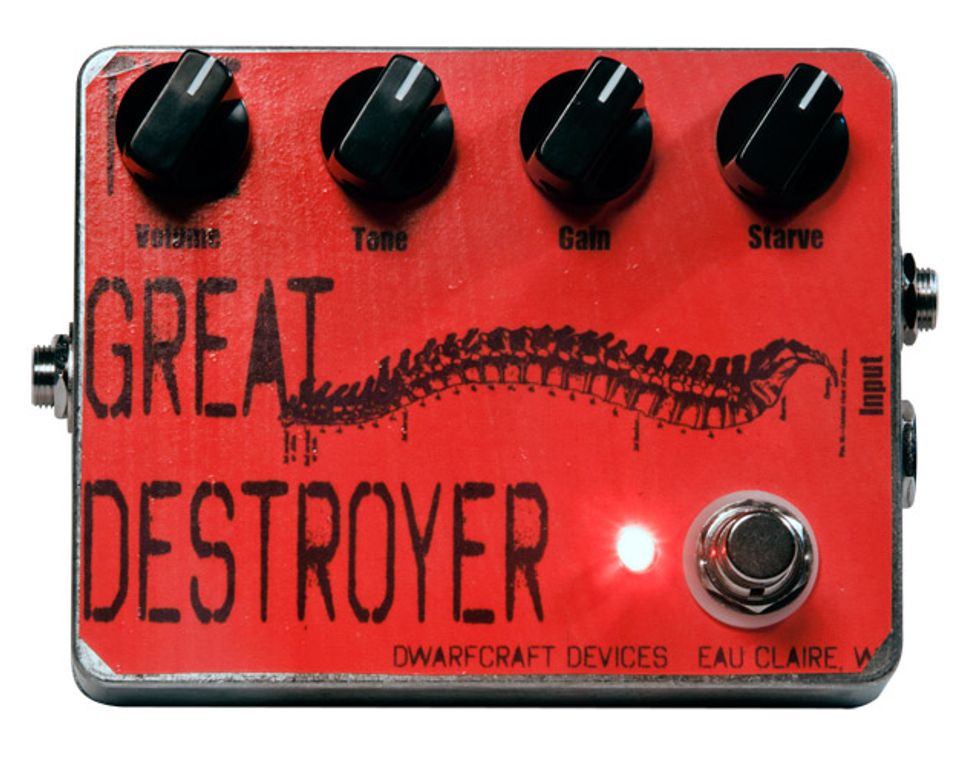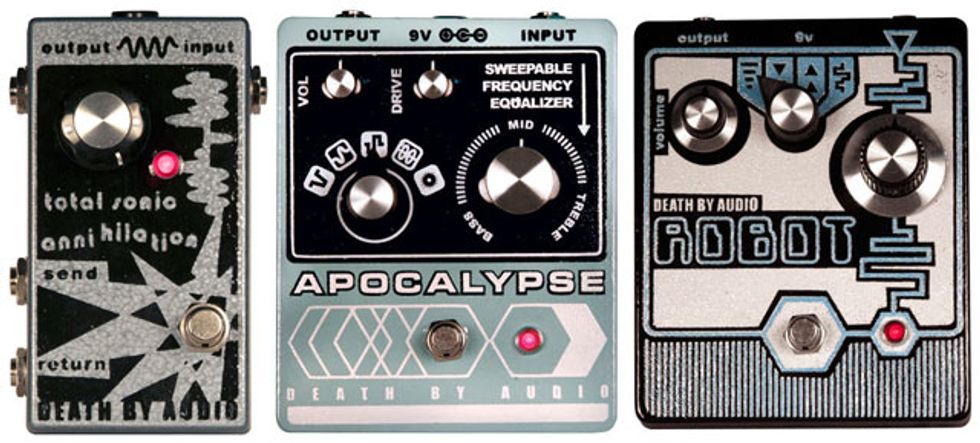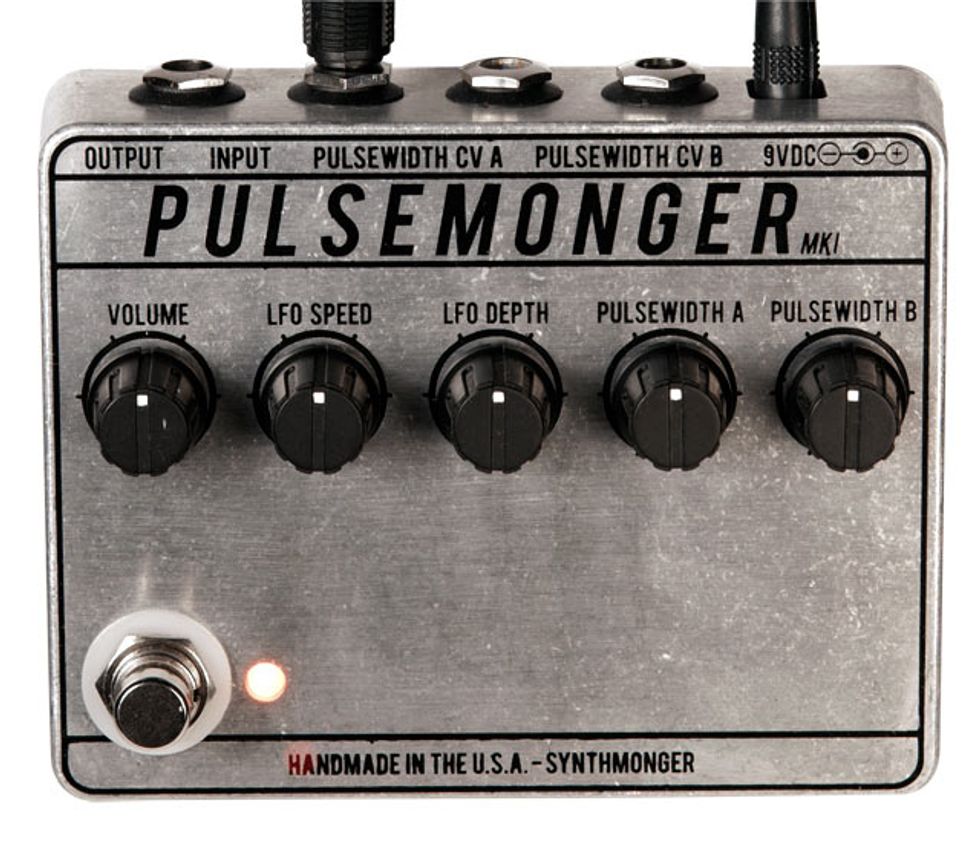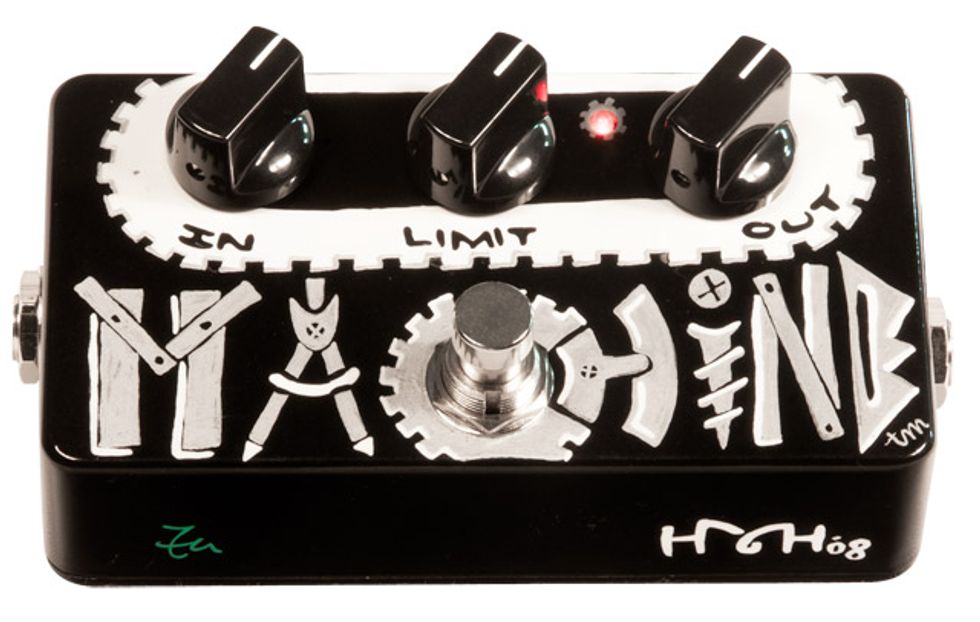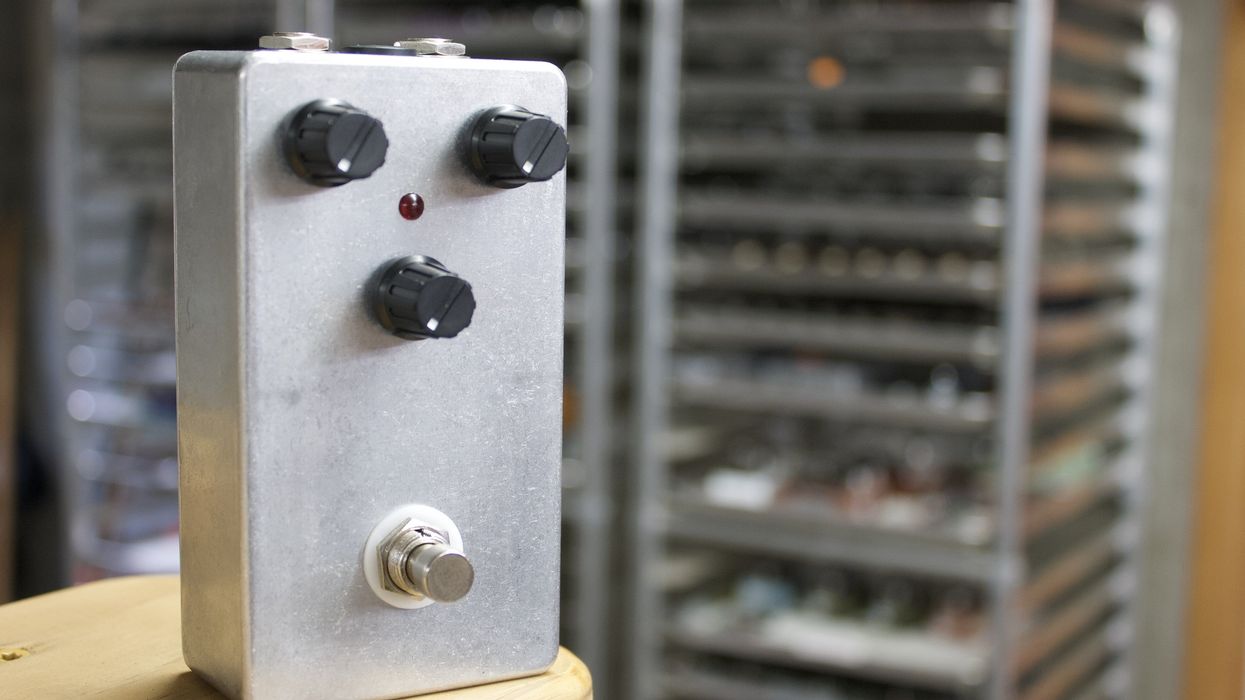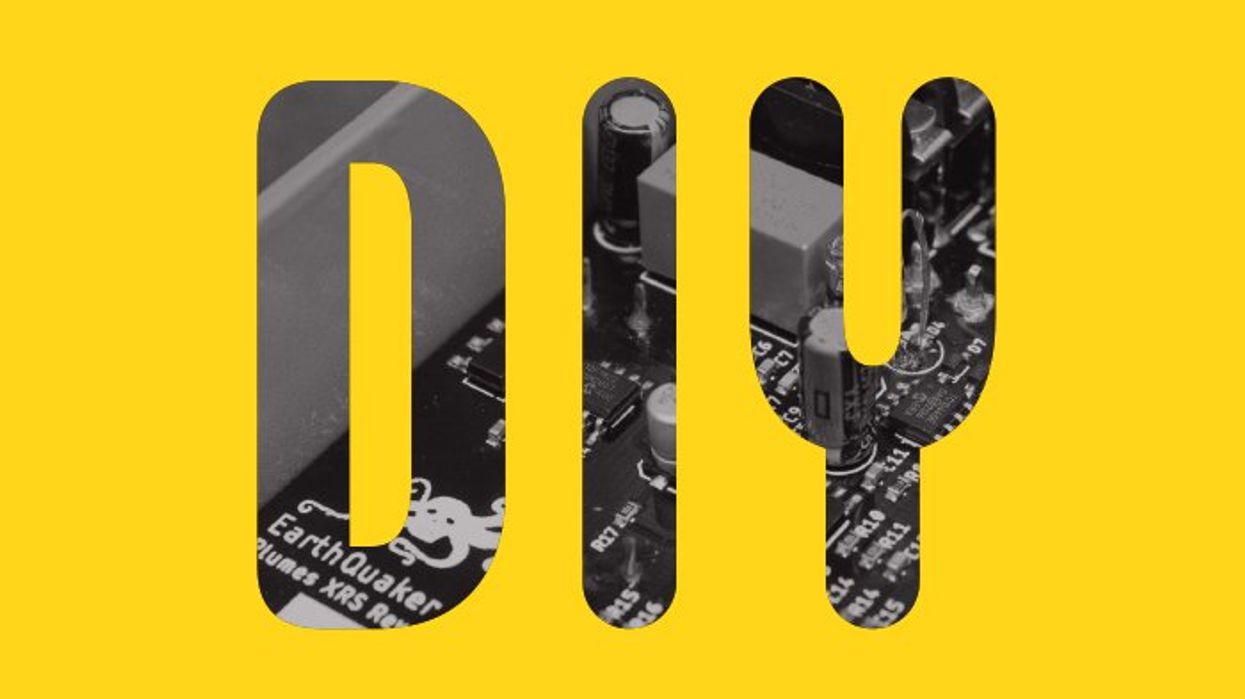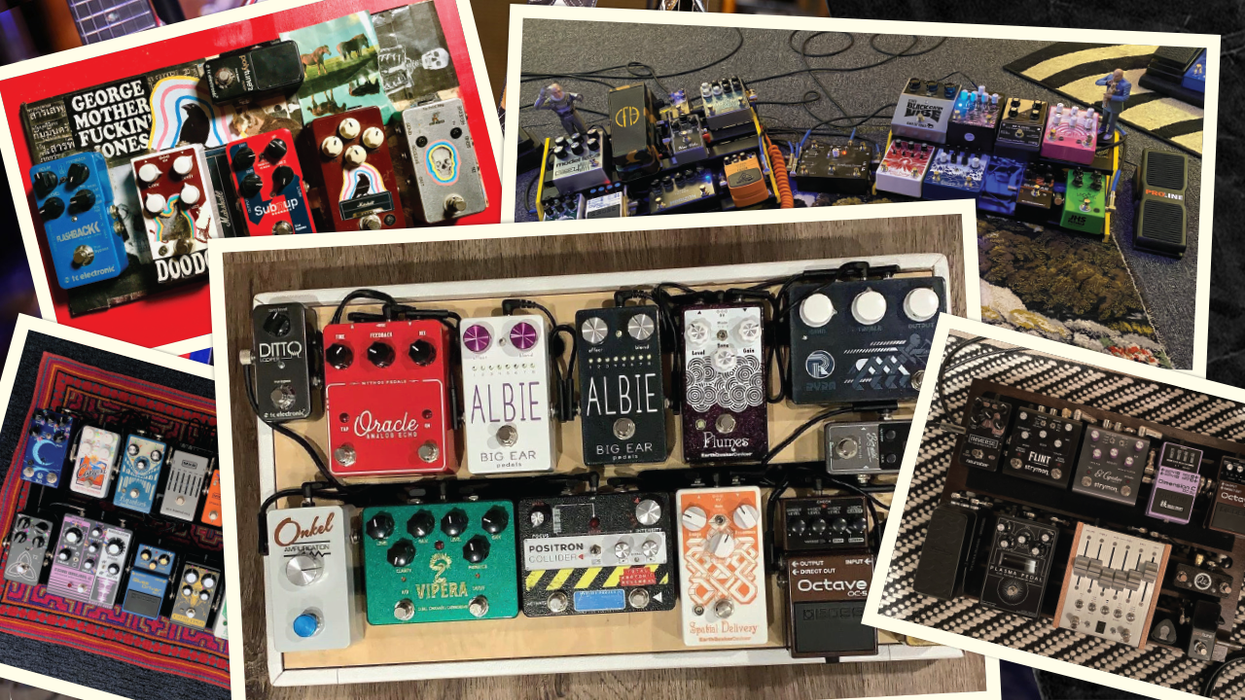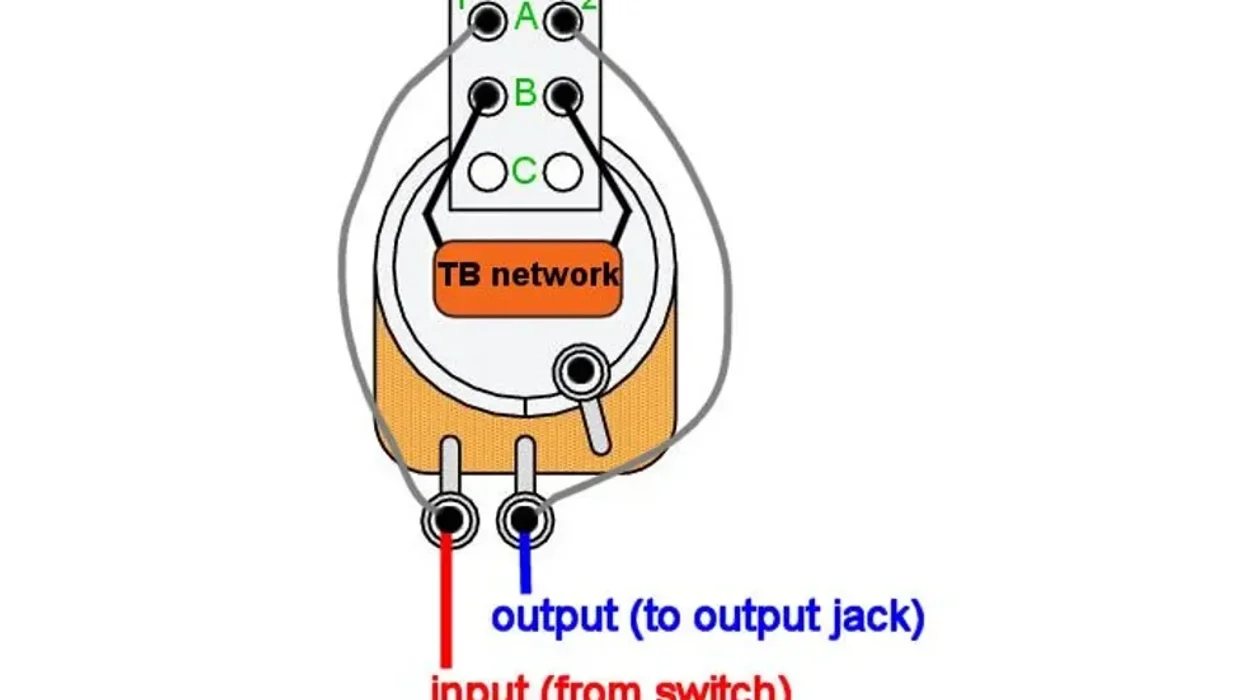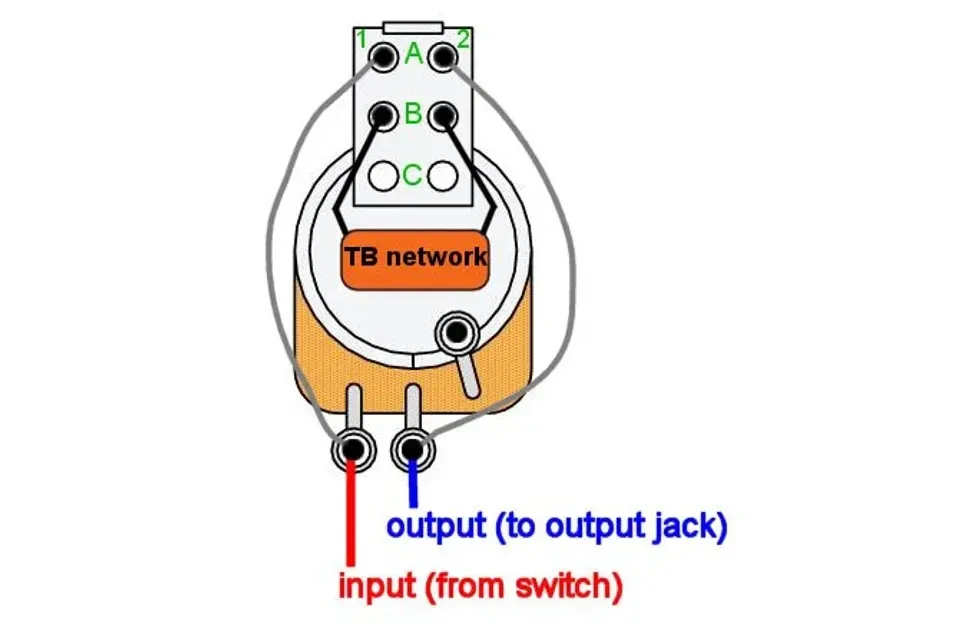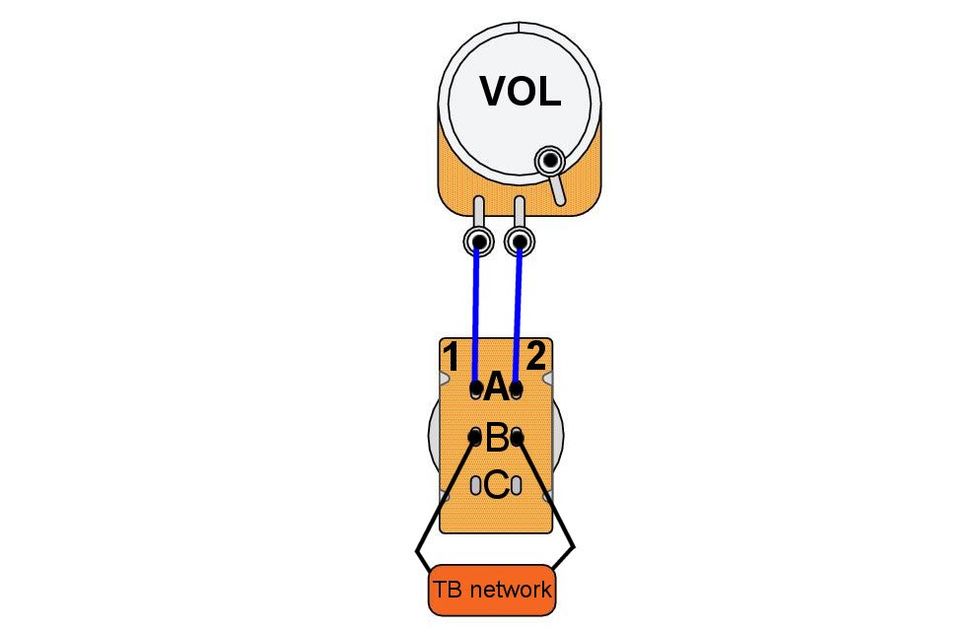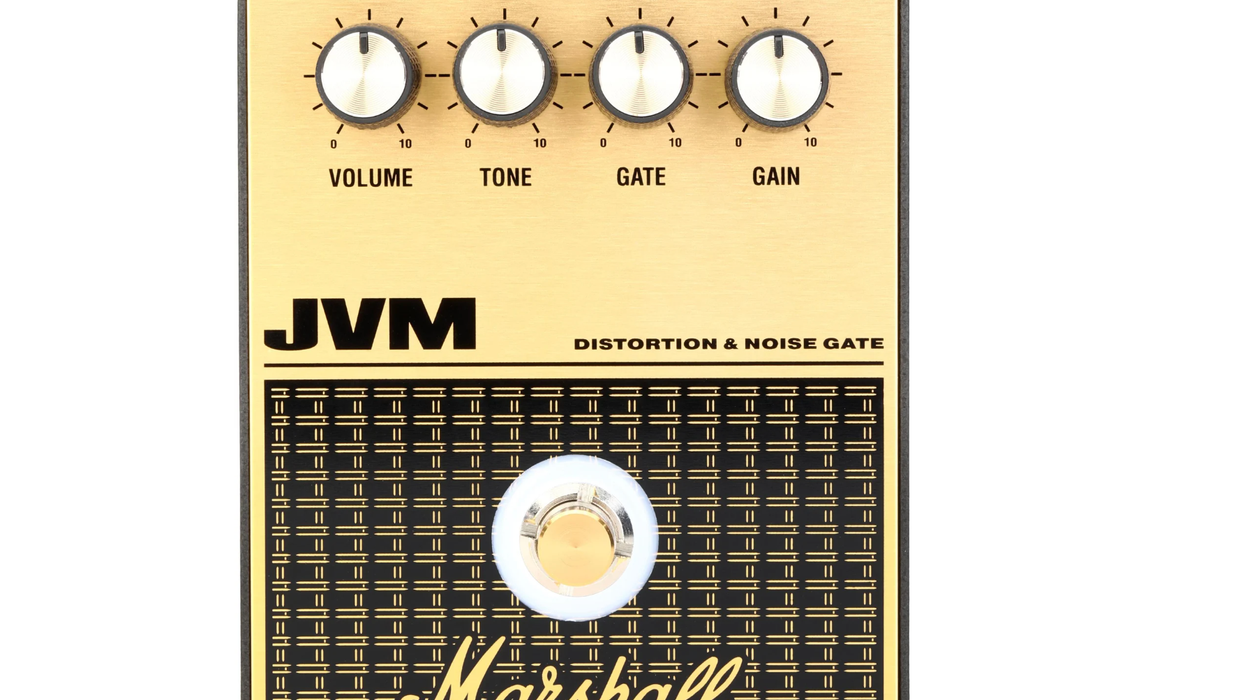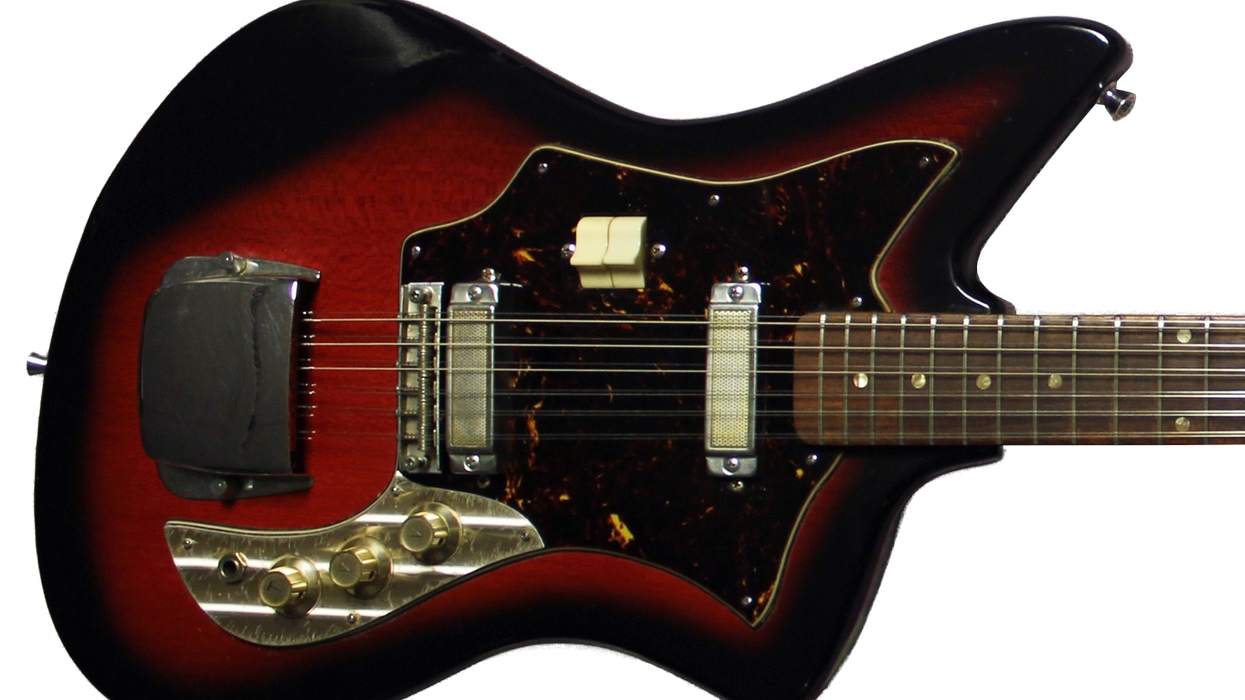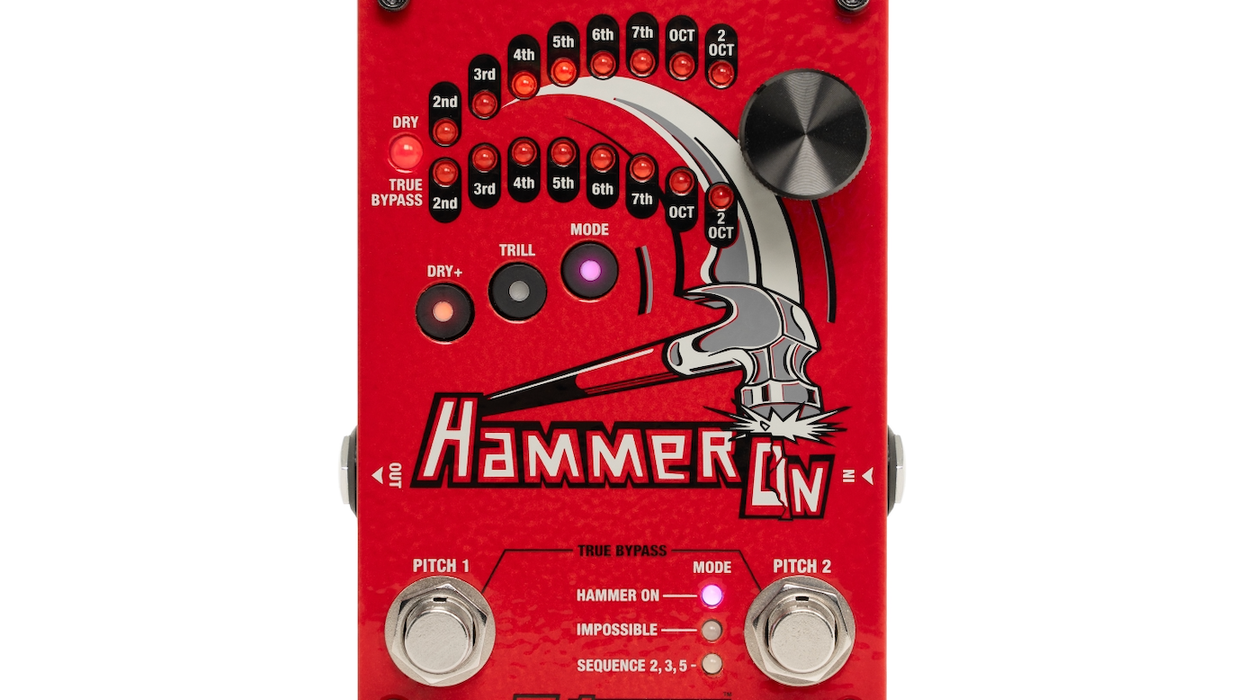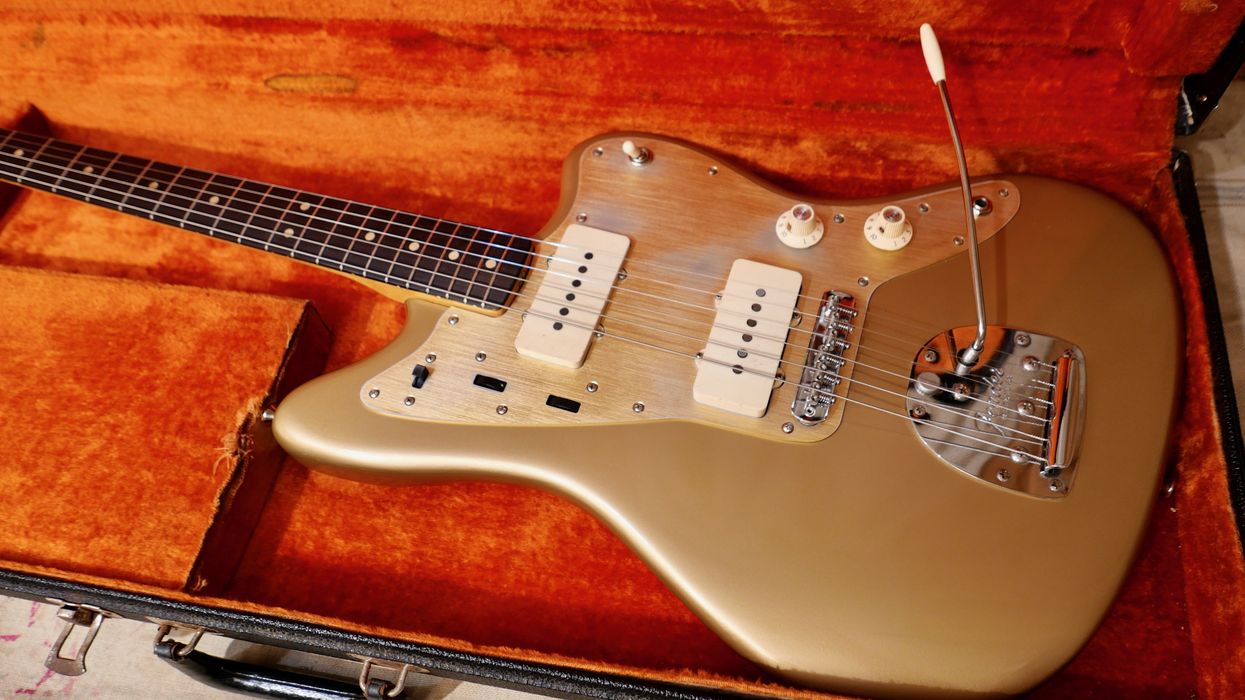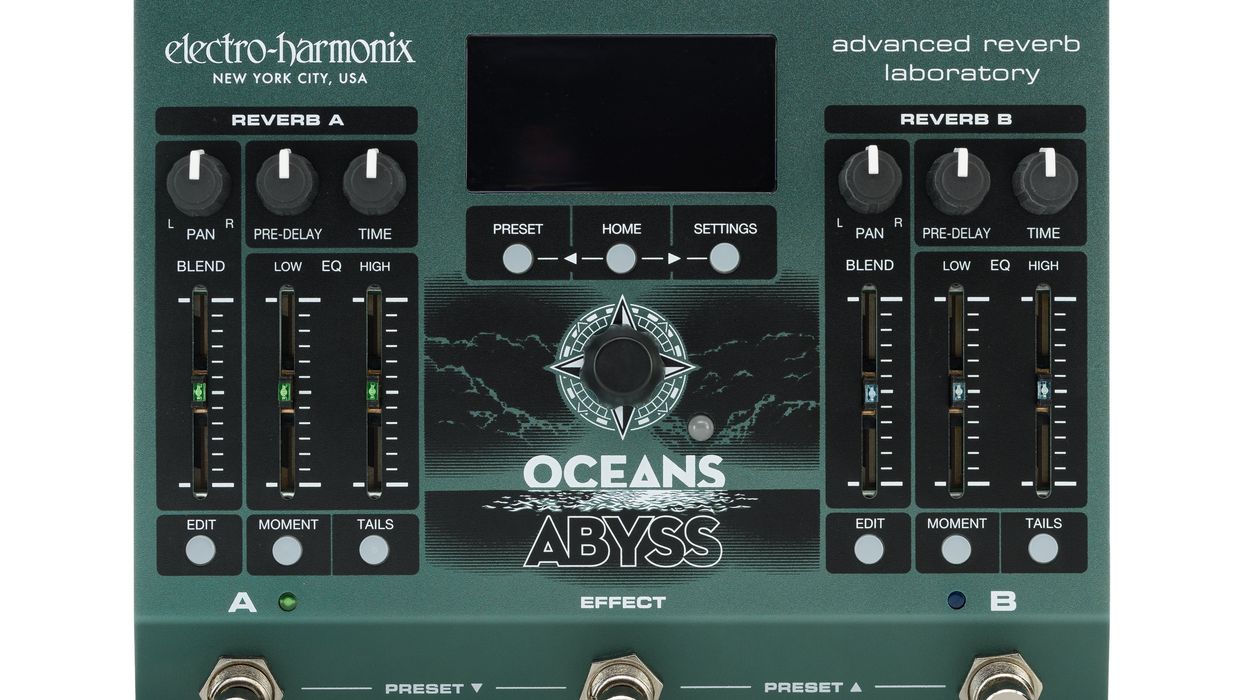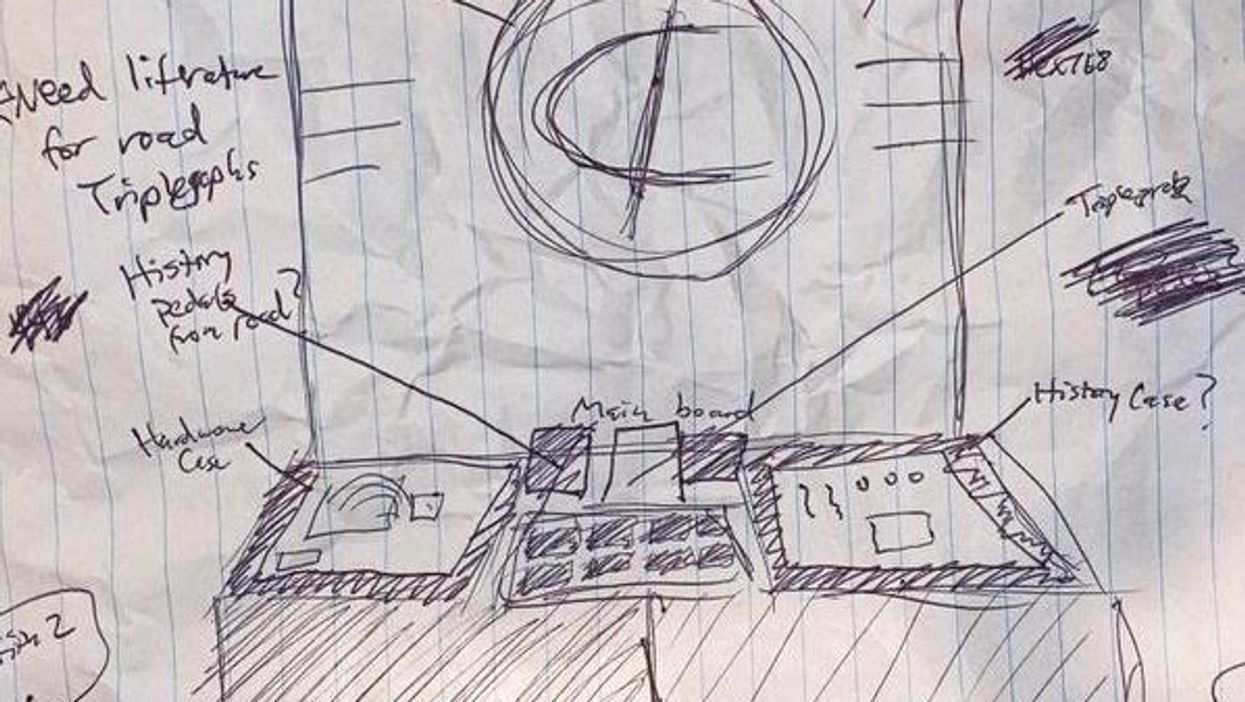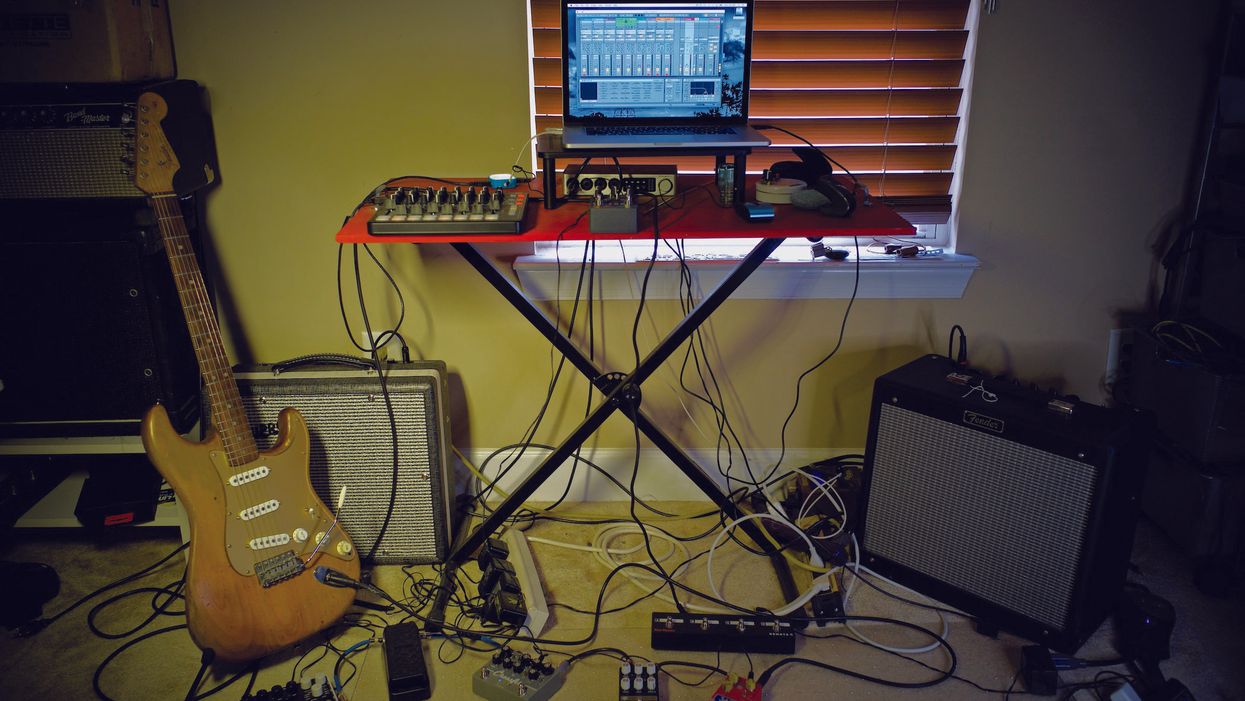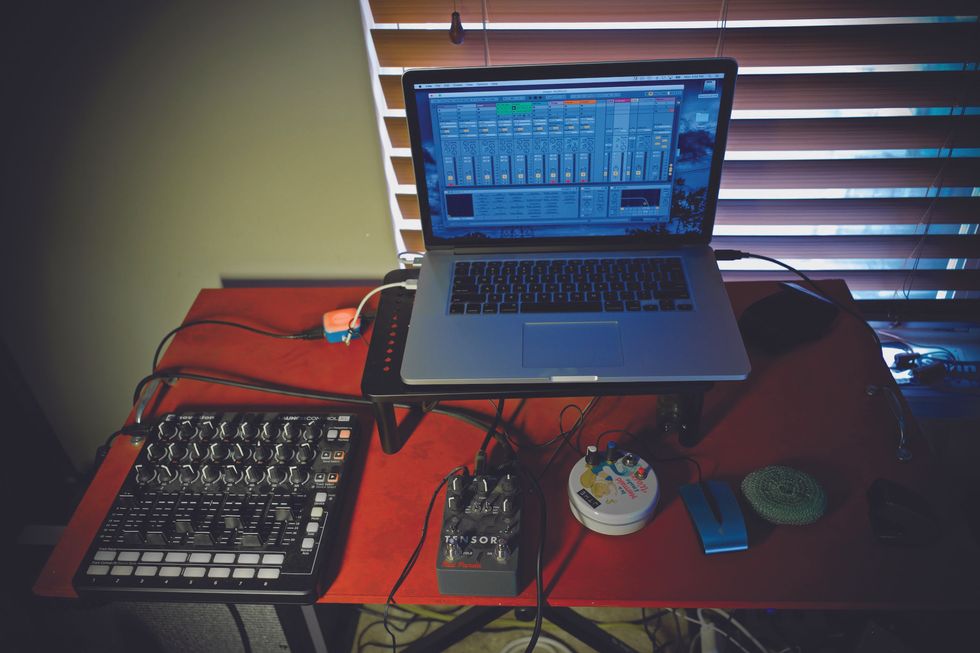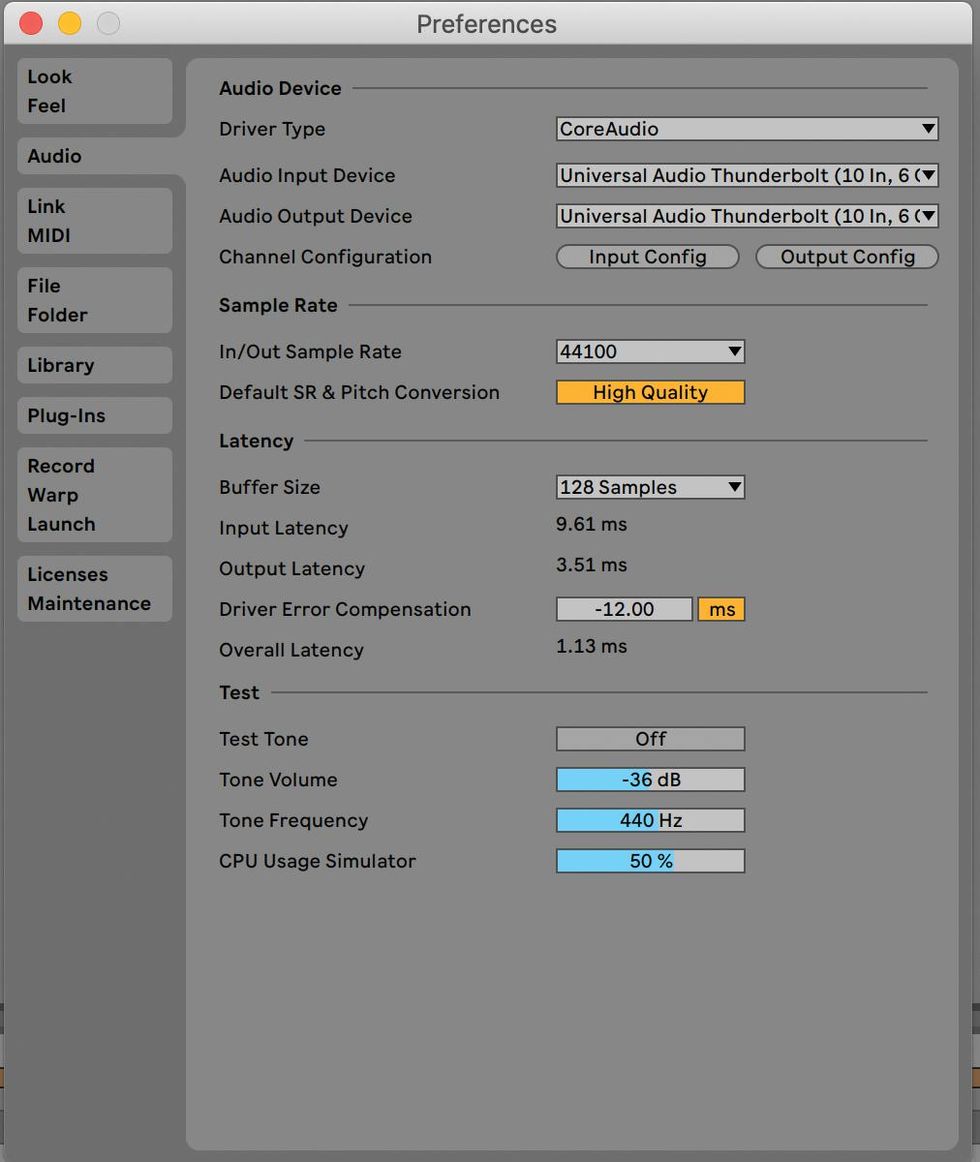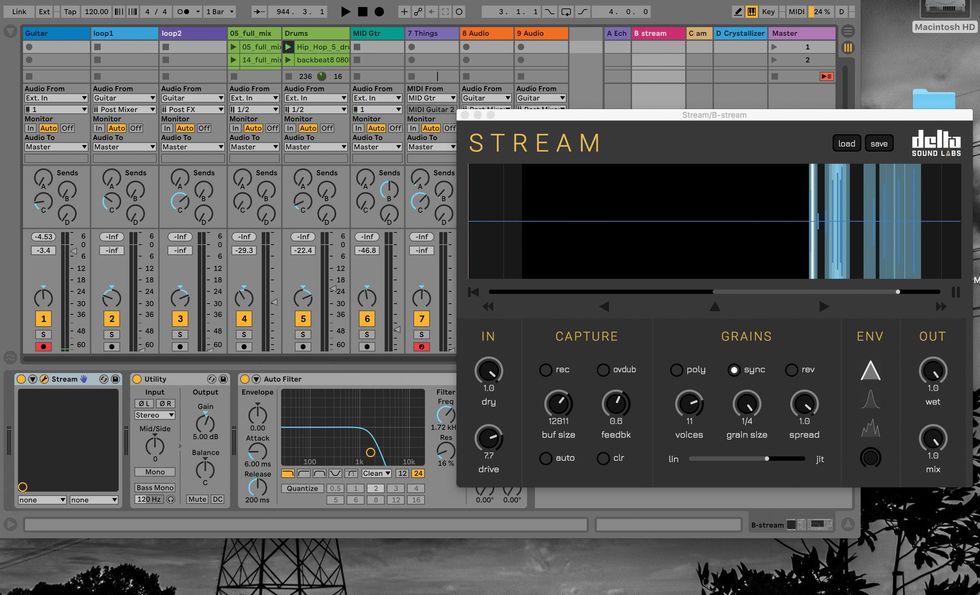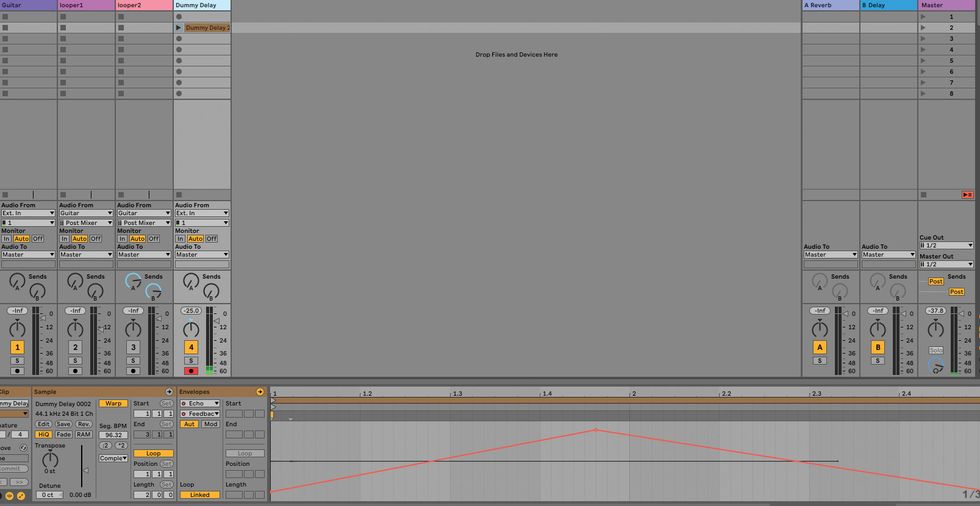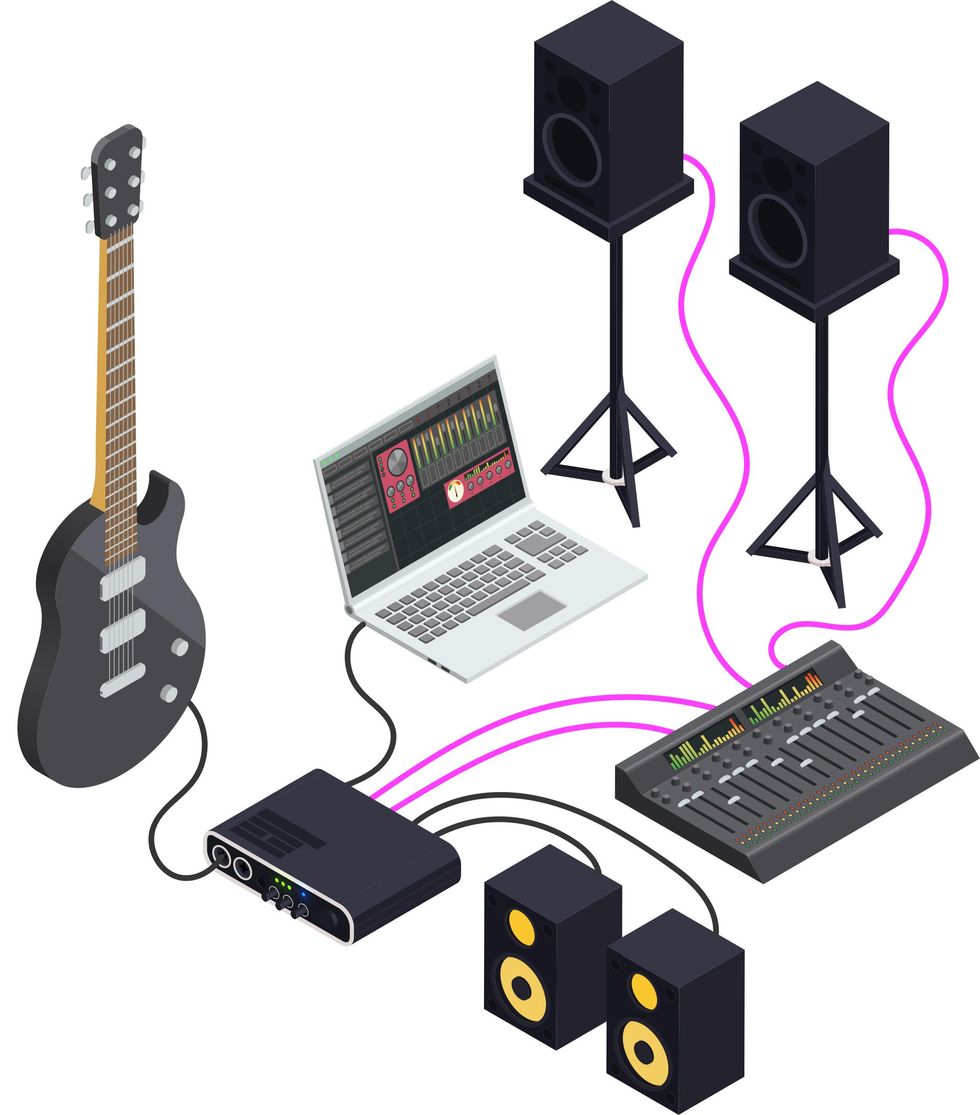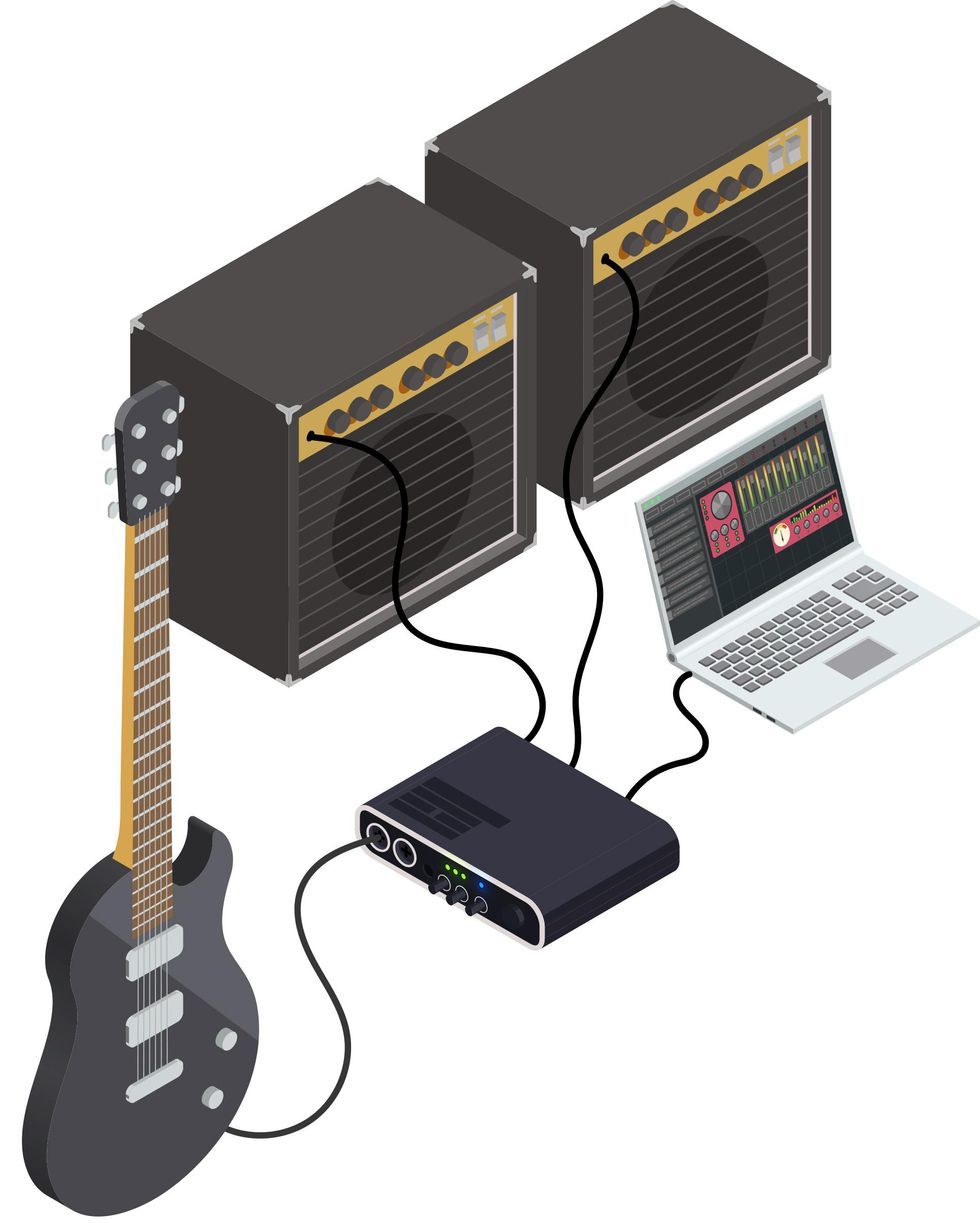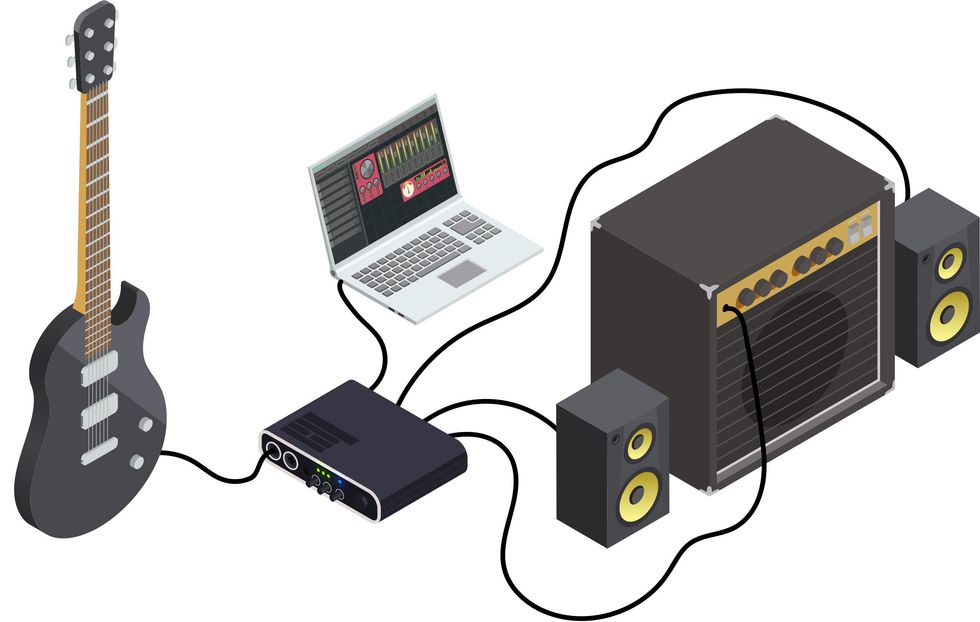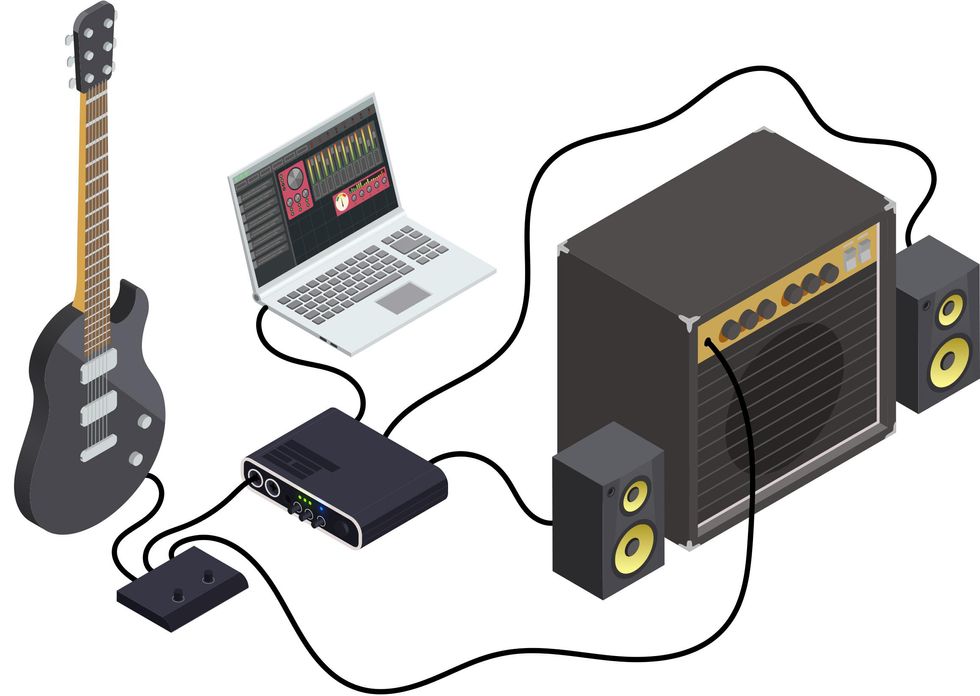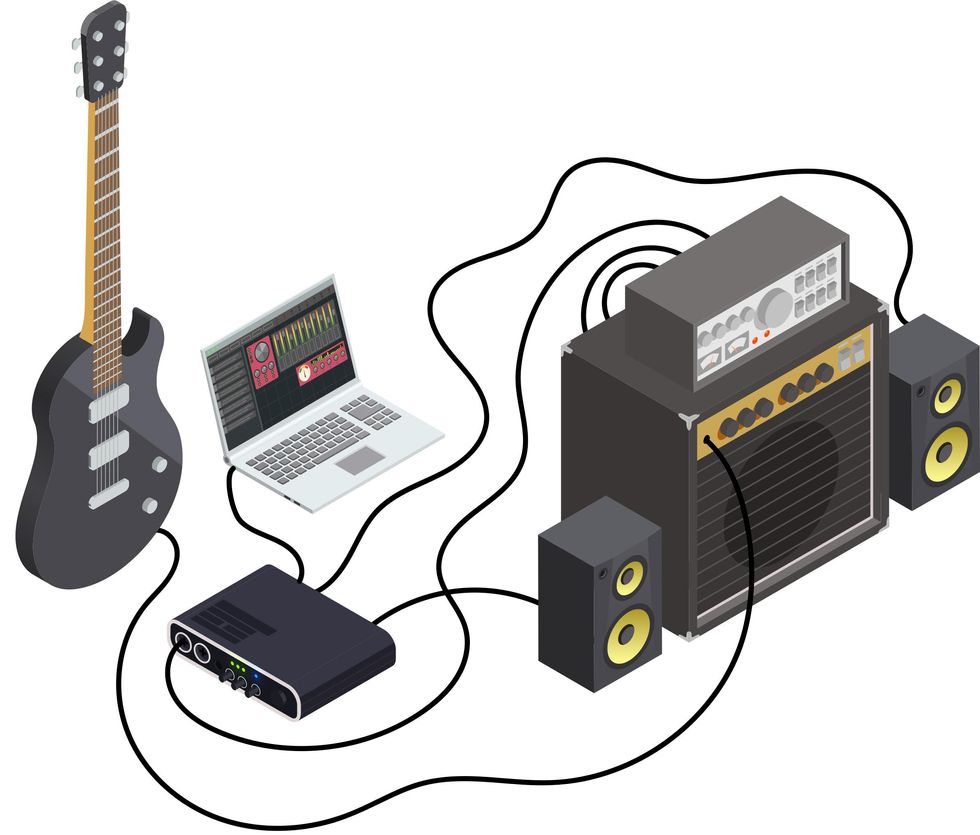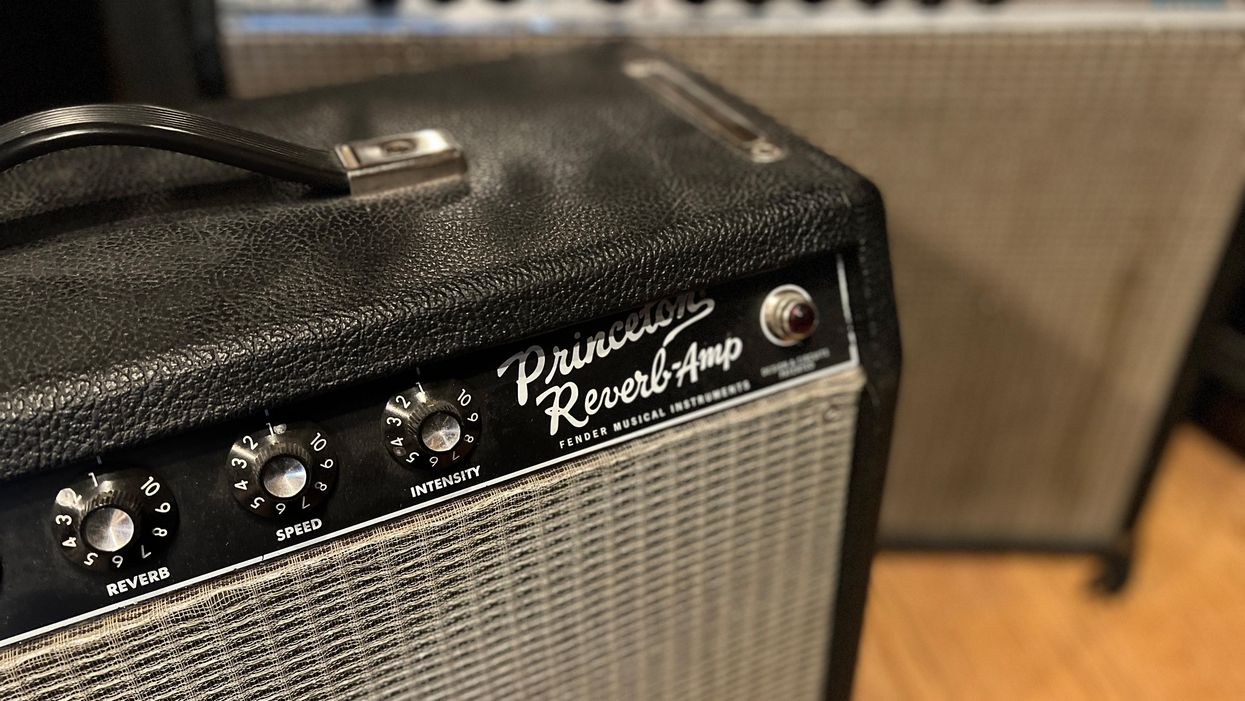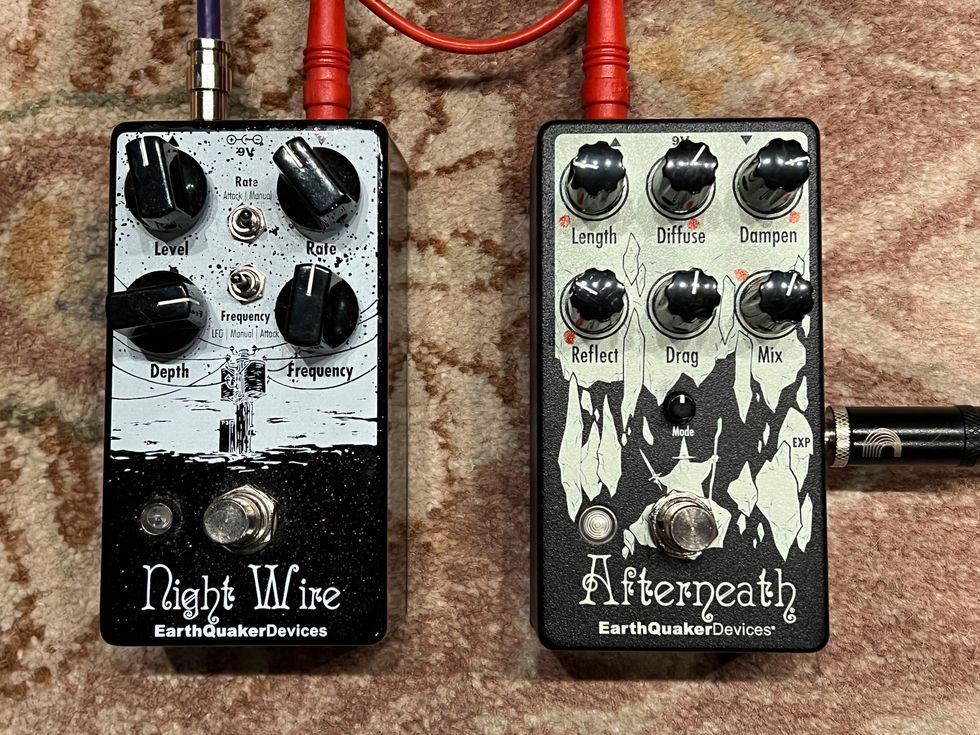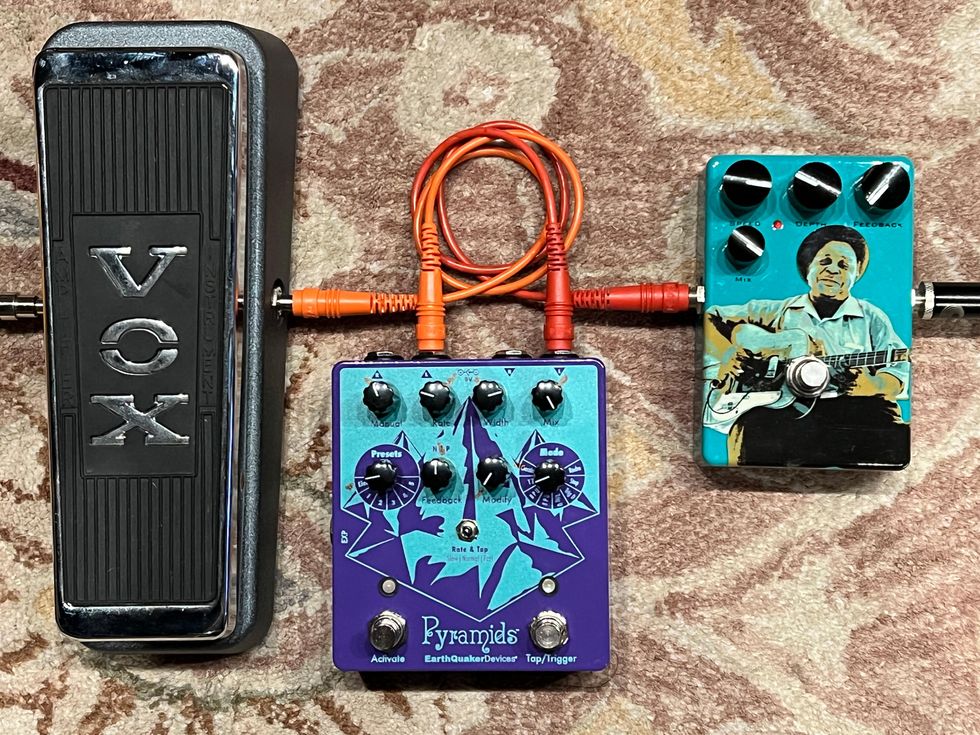You know how a three-knob overdrive works. And a single-knob boost isn't gonna throw you for a loop. But double the knobs and add parameters with names like Crash, Warp, and Glide, and things can get murky fast. This is the world of bizarre effects, and if you're confused by stompboxes with more than a few knobs and switches, you're certainly not alone.
Innovations in manufacturing techniques, inexpensive microprocessors, and computer connectivity help designers push the limits of what is possible within the finite space of an effects pedal. And it can seem like the road to interesting and inspiring guitar tones is sometimes paved by equipment that appears built for obsessive geeks only. Here, we'll try to demystify some of the most mystifying gadgets by breaking them into some loose categories—Pitch, Synth, Destruction, and Ring Mod—and providing some guidance in how to access the tones hidden inside and implement them in your own pursuit of musical majesty.
The categories we investigate here typically cover a single device type. Some effects may fall into several categories and some will defy categories entirely. But as we'll see, the surface complexity of many of these effects often comes with amazing musical potential that can change the way you approach the guitar.
We're kicking things off with pitch shifters, and will be adding a new effect each week for the next three weeks. Let us know in the comments how you use these effects, and what pedals are your favorites.
Pitch Shifters
History
Pitch shifters go back to the earliest days of sound processing. Electronic pitch shifting started as a studio technique with the reel-to-reel tape machine. Psychedelic giants like the Beatles and Jimi Hendrix toyed with speeding up or slowing down reels to change the pitch of a musical passage. The inherent limitation with the tape manipulation approach was that you could not shift the pitch without changing the speed. Also, pitch shifting on tape could not be used on the fly.
One of the earliest stompbox attempts at pitch shift was Roger Mayer's Octavia for Jimi Hendrix—a simple octave interval with a fuzz circuit. In subsequent years the complexity and number of simultaneous intervals that a pitch shift unit can reproduce has grown substantially.
DigiTech Whammy
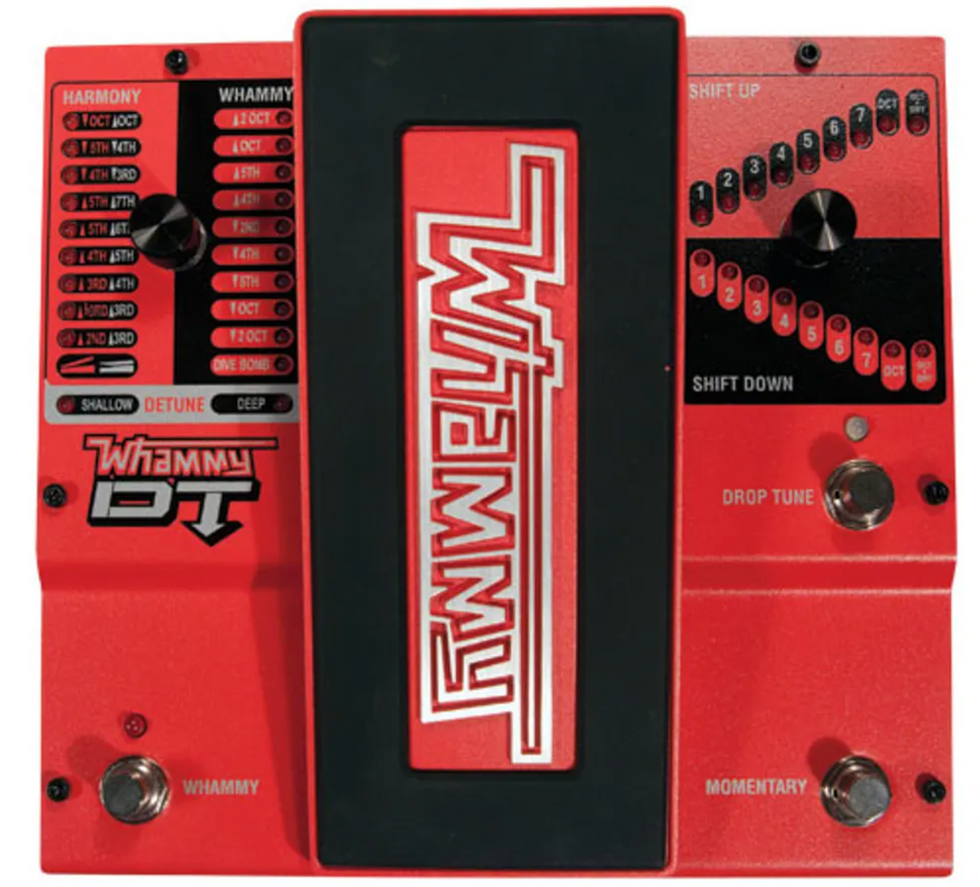
Where You've Heard It:
Ever wonder how Dimebag Darrell achieved those 2-octave bends to accent his frenetic and brilliant solos? It wasn't some space age strings that could withstand a wicked tugging. He used a DigiTech Whammy pedal. Take another listen to “Becoming" on theFar Beyond Driven album. DigiTech's Whammy is perhaps the most prolific pitch-shifting mechanism of relatively recent time and can be heard on recordings by the Smashing Pumpkins, Radiohead, Joe Satriani, Tom Morello, and Jack White, just to name a few.
How to Use It
Blend - Typically the first control you're going to find on a pitch-shifting pedal is a blend control. With this control you mix the amount of pitch-shifted signal with your dry signal, pairing your original note with a harmonic counterpart to create a more lush effect.
Octave - Though numerous intervals such as 3rd, 4th, and 5th are common on pitch shifting stompboxes, the most common interval is the octave. Adding an octave down to your signal can beef up a solo, giving the notes additional punch and presence in the mix.
Setting: Octave Down at 50%, Dry at 50%
Its counterpart, the octave up, can add a singing, shimmering element to notes—not unlike those on a 12-string acoustic. Hendrix put his signature fuzzy octave shift to work in loads of material— “Purple Haze" is exemplary in its layered use of fat, octave-down fuzz rhythms and flying octave-up solos. There are several octave fuzz pedals on the market that shoot for Mayers' classic Octavia tone including Dunlop's Octavio and Demeter's Fuzzy Octavulator.
Harmonize - For some guitarists, harmonizing pitch shifters are the way to go. To achieve a more harmonically rich tone there are just as many options, from the relatively straightforward Boss PS-6 Harmonist, to the nearly boundless PitchFactor by Eventide. Whatever the tool, the harmonizing effect adds flavor to your riffs and can give an ordinary melody a unique twist. With a harmonizing stompbox like the Boss PS-6 you can blend in any common interval. Harmony is most commonly employed vocally, so to get started with a harmonizer, think of your guitar like a single voice in a duet, or a small choir. The harmonizer gives you that backup melody that helps to richen your musical expression. In “Hotel California's" climactic and final solo a pair of simple solo riffs are used in harmony to achieve an iconic passage that is un-mistakable. A primary usage of the harmony pedal for most guitarists is to easily achieve this type of duet effect with one guitar.
Settings: 3rd Up at 50%, Dry at 50%
But these passages would begin to sound stale if only a single interval were used. Consequently, most modern pitch shifters including the PS-6, DigiTech's HarmonyMan, and Eventide's PitchFactor are able to pitch shift diatonically, that is, according to a predetermined scale. These units select the pitch-shifted notes from a list defined by the selected scale.
Bend - One of the greatest things about stringed instruments is the ability to create vibrato by bending the strings rhythmically while a note sings out. But strings only bend so far before they snap, and the solution DigiTech posed in the early 1990s—for players who wanted to go beyond the tensile strength of their instrument—was the Whammy pedal. The effect found itself on the pedal boards of a handful of iconic players in the '90s including The Smashing Pumpkins' James Iha and, most famously (and perhaps most impressively), Pantera's Dimebag Darrell. With the capability of multi-octave bends at the dip of a rocker pedal, the Whammy was hugely successful in enabling guitarists to extend a solo into a sonic range well beyond the limits ever previously thought possible.
Settings: Expression pedal bend down from 2 octave up to root.
Dimebag's use of the Whammy pedal on “The Becoming" and in numerous solos added a terrifying banshee squeal to his already colossal control of the floating tremolo bridge.
Pitch Explosion - Some of the more modern pitch shifting units allows you to get some very unique results. For example, the Eventide PitchFactor has an internal sequencer capable of selecting from a few dozen preset musical sequences. As you play a single note, the sequencer pitch shifts the note to the current note in the sequence.
Settings: Harpeggiator - rising arpeggio setting blended 50/50
The result harkens to the arpeggiated synth runs found on '80s records by Duran Duran and synth pop pioneer Gary Numan. With full MIDI connectivity, the Digitech's Whammy can achieve similar results. Pedal maker Molten Voltage created the Molten MIDI, which stores MIDI sequences and is specifically designed to interface with the DigiTech Whammy to produce wild pitch shifting arpeggios. While this may sound like a feat for the experienced, these are all preset, out-of-the-box settings that any player can tap easily.
Makers of pitch shifting devices are constantly expanding their horizons and the capabilities of their products. One maker, Snazzy FX, turned back the clock in a more unique way. Their Wow & Flutter device is essentially a delay pedal, but the twist is that the delays are pitch shifted by an amount that can be determined by your playing dynamics. The result can be anything from a delicious, analog chorus, to a seasick wash of warbled delays.
Pedals We Tested
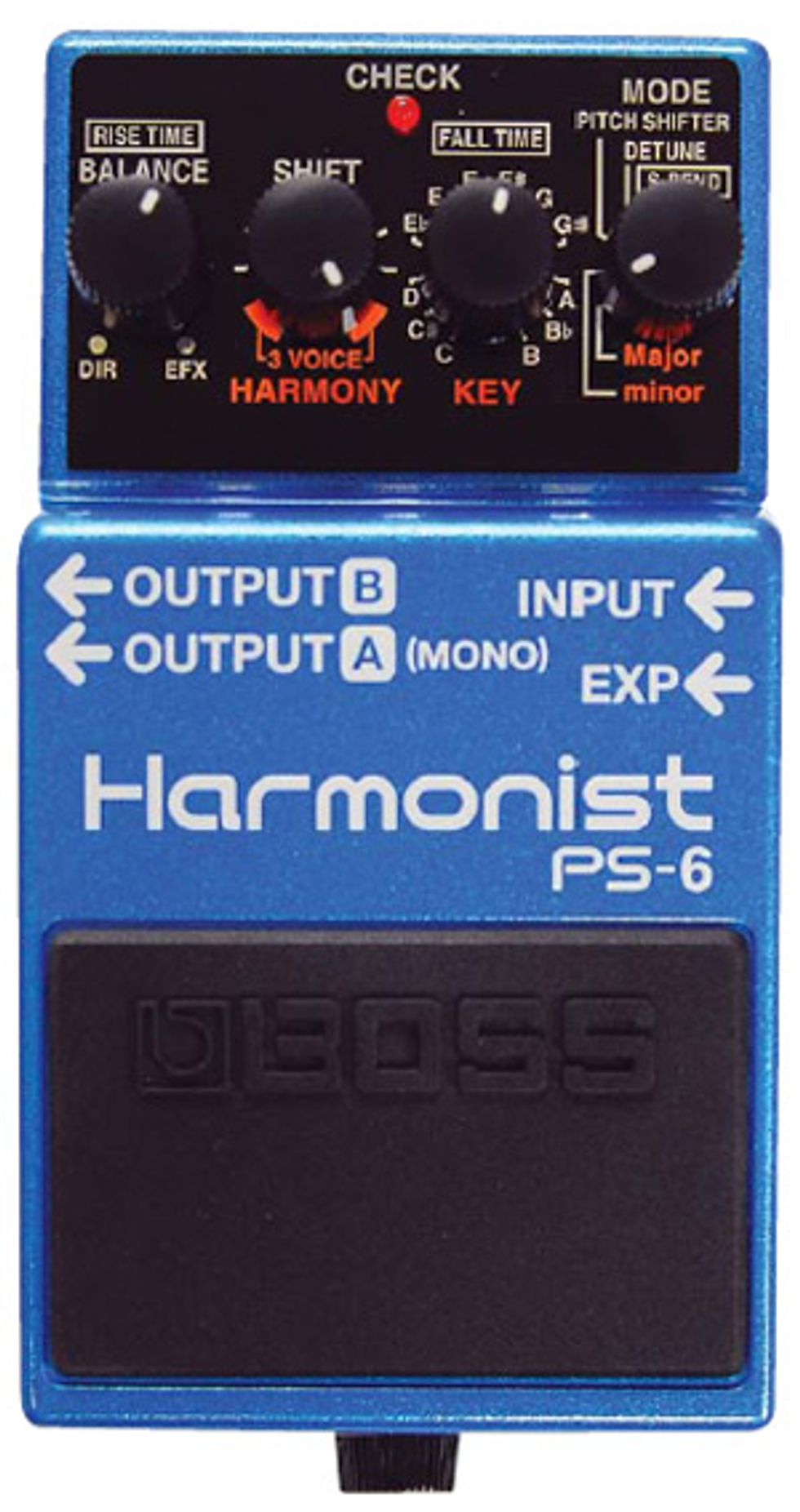
DigiTech Whammy DT - DigiTech has always been an innovator in the realm of pitch shifting. Their aforementioned Ferrari red Whammy pedal practically set the standard and has gone through numerous iterations while staying relevant to the musical needs of the time. The latest model, the Whammy DT contains a few new features including an array of pitch shift presets, improved pitch shifting algorithms (for pristine pitch shifting, free of digital artifacts), true-bypass switching, and a slightly modified layout. The Whammy line, like its name suggests, has typically focused on pitch bending rather than shifting between set intervals. In addition to bending your original signal, the Whammy DT can produce a harmonic signal and allow you to bend that signal alone! This a fantastic tool for creating subtle musical bends that can add a touch of harmonic richness to your chord progressions. The new “drop tune" settings allow you to make a blanket pitch shift to your entire signal at any half-step interval from plus 7 to minus 7, as well as octave-up and octave down. This new feature on the Whammy allows you to change the range of your instrument while staying in familiar fretboard territory.
DigiTech HarmonyMan - DigiTech's latest foray into the world of pitch modifying effects pedals is the HarmonyMan. As its name suggests, the HarmonyMan focuses on all things harmony. Its subtitle—Intelligent Pitch Shifter—suggests a unit that can detect key and adapt according to that information. The HarmonyMan does just that using its new musIQ mode to automatically detect a harmonic key. There are also two knobs (Voice1 & Voice2) that allow you to set the interval of the voices independently. These knobs can be used to control minor detuning, manual chromatic intervals, and varying intervals that work with the pedal's intelligent key detection. A cool feature in the HarmonyMan is the Sidechain input. If you plug a second guitar into this input, the internal key detection will read from it. This is particularly awesome for duos where one guitarist plays rhythm while the other solos over the top. Working in concert with the Clean Input, the Distortion Send/Return can be used if you want to apply distortion before the harmonizing effect without confusing the HarmonyMan's stellar pitch tracking capabilities.
Eventide PitchFactor - All of the units in Eventide's Factor line pack an unprecedented amount of versatility and control into a relatively small package. With 11 knobs, 9 in/out jacks, MIDI capability, and 3 footswitches, the PitchFactor embodies the idea of an intimidating effects unit. But the PitchFactor's interface relies on knobs more than menus and is therefore intuitive and surprisingly user friendly. The PitchFactor has the basics covered, including multi-voice (up to four voices) harmony, expression pedal control of pitch bends, and intelligent key detection. Additional features that set the PitchFactor apart includethe unit's 10 effects modes, send/return loop, user preset storage, detailed mix control, extensive MIDI controllability, USB connectivity, a built-in tuner (strange that most other pitch-based effects don't include this!), delay effects, and so much more. Eventide has taken their top 10 pitch tools, new and old, and packed them into the PitchFactor as “effects." This includes legendary harmonizing giants H910 & H949. Other included settings enable chromatic pitch shifts in an astounding six-octave range, arpeggiator sequencing, classic octave/fuzz effects and numerous synthesizer tones..
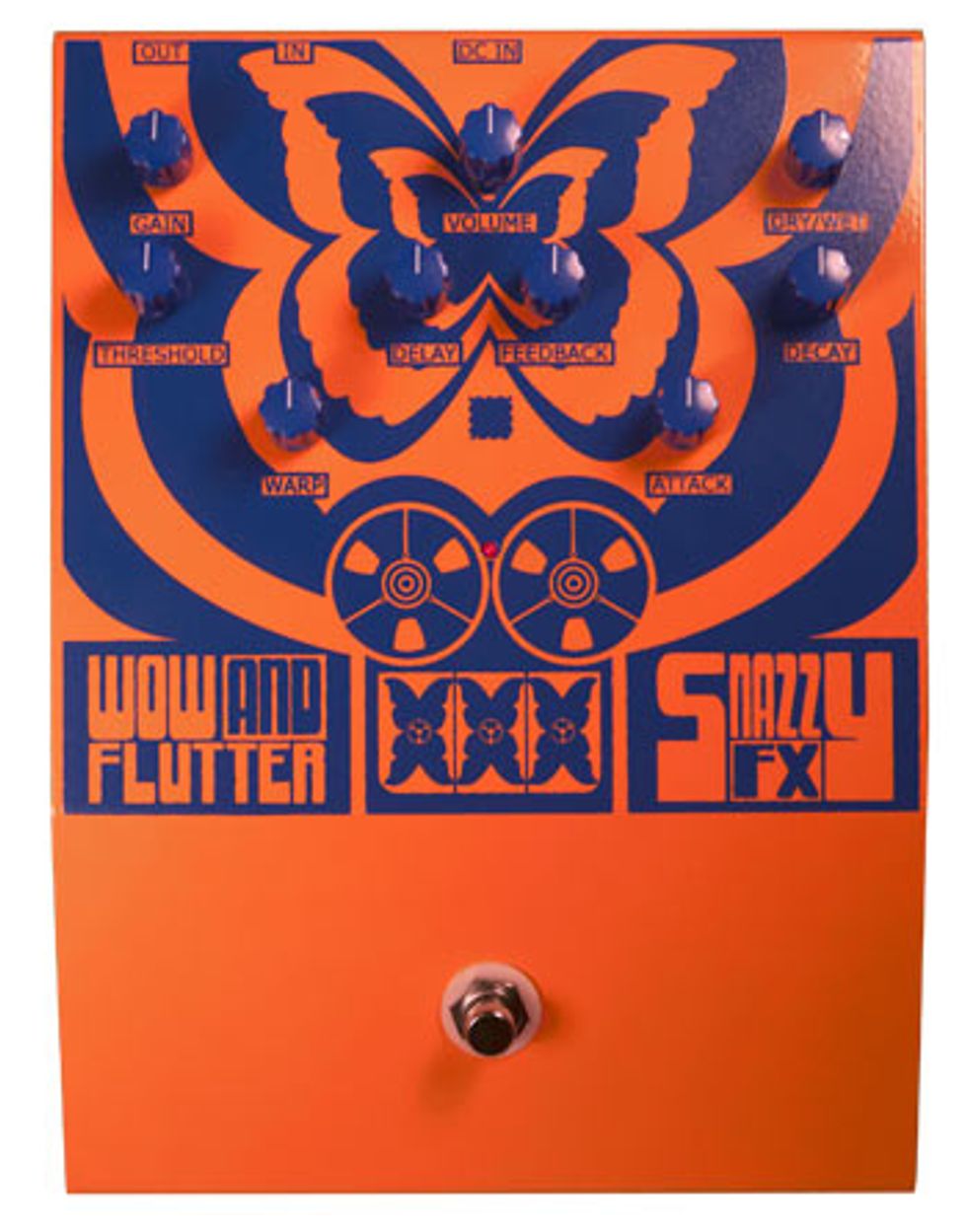
Synthesizers
History
The marriage of synthesizer and guitar is a decades-old relationship. And it's been marked by a few blockbuster hits and some spectacular misses. Influential synth builder ARP created the Avatar in 1977, which required a special hex pickup and used pitch-to-voltage technology. So few were actually sold that the company, which had previously produced such massively influential synths as the 2600 and the Odyssey, nearly tanked.
Roland attempted the synth effect in the same year as ARP with their GR-500. But though both companies faced similar challenges, Roland experienced much greater success—most notably the analog GR-700 in 1984 and the later digital GR-33. The GR-33 was a floor-based synth unit with the synth brain from their acclaimed JV-1080 keyboard line and the company's special GK-2A pickup. The result was a wealth of synth presets that widened guitarist's palates like few processors before it.
Many guitar synth pedals today do not require a special pickup. Instead they use pitch tracking to detect the pitch of your input signal and use that information to tune and activate an internal oscillator. In other words, the synth tone comes directly from an actual synthesizer circuit, not a modified version of your guitar signal. It's a much simpler approach that streamlines hardware, simplifies the interface, and can transport your guitar to new dimensions of tone possibilities.
Where You've Heard It
You certainly can't talk about guitar synthesizers without mentioning prog-rocker and studio extraordinaire Adrian Belew. Though his primary project is King Crimson, his unorthodox virtuosity has been a highlight of records by art-rock acts including Frank Zappa, David Bowie, Talking Heads, and Nine Inch Nails. On the King Crimson track “The Sheltering Sky" you can hear his synthesized lead work, which, like so much of his work, blurs the line between guitar and synthesizer.
Another more recent prog-rocker who utilizes guitar synthesis as a regular feature of his playing is Omar Rodriquez-Lopez of The Mars Volta. On their fantastic De-Loused In The Comatorium album you can hear Rodriguez-Lopez' infectious and energetic hard-rock playing style paired with long, avant garde-influenced noise sections which, like Belew, blur the guitar/synth divide. In the track “Cicatriz E.S.P.," filtered synth guitars subtly punctuate the transitions between brilliantly crafted song structures.
How to Use It
The first step to tapping into a guitar synth pedal is setting the input sensitivity so that the pedal has enough signal to detect the pitch and intensity of your playing. Typically there will be a dedicated control for this. It is often beneficial to roll your guitar's tone knob to zero and use the bridge pickup. This will eliminate excessive harmonic content that can confuse the pitch tracking mechanism. From this point you can start sculpting your synth tone.
A basic synth lead is one of the simplest tones and easy to dial in quickly. Simply select an oscillator, disengage any filters, and let if fly.
Synth octave up at 50%, synth interval 5th down at 50%, dry at 0%
The resulting sound has a bright, quick attack—like a guitar, but you can sustain steadily as long as the unit detects your input signal, like a keyboard. Many synth pedals also have harmonizing capabilities, which further contributes to a classic, emotive lead sound.
For a synth bass tone, take the simple lead line described above, lower the pitch of the synth down one octave, and add a filter.
Octave blend at 50/50, filter cutoff at 3 'clock, resonance at 2 o'clock
The lower octave fattens up the sound and the filter can be set to add a percussive element by setting it for a fast-but-not-too-fast attack and short sustain (or decay, depending on the unit). The filter will open quickly as it detects a note creating a percussive sweep on the attack to roughly mimic the spank of a slap bass. A short sustain will whip the filter back after the attack, again contributing to a percussive synth sound. The proper speed of the filter settings depends on the speed of your riff, so plunk away and adjust accordingly.
Creating a lush pad is a bit more work and may require some additional processing such as chorus, reverb, and delay, but the results can be stunning.
Detuned octave down blended 50/50, triangle VCO, glide on, glide at 9 o'clock
The basic idea is that you want a darker tone, a slower attack, and a harmonically rich mix of oscillators. For a darker tone, set the filter cutoff much lower so that high frequencies are suppressed. Set the filter so that the attack sweeps are very slow, like an orchestral swell. Then add some harmonic content like a major or minor 3rd, depending on your composition. More harmonic content will help you to achieve a lush, rich sounding synth pad.
Controls
Wave - Depending on the unit, there may be numerous voltage controlled oscillator (VCO) wave options. Some of the more common VCO types include Sine, Triangle, Sawtooth, Ramp, and Square. Sine is the simplest waveform and produces the purest tone, generally free of harmonic overtones and perfect for pads. Triangle sounds like a brighter Sine wave. Sawtooth and Ramp are inverted versions of the same waveform and have a bit more upper harmonic content that translates to a buzzing tone, rich in high frequencies, and perfect for cutting leads. Square waves have a big bold melodic voice that is great for driving melodic lines, but also have a fair amount of high frequency content. Pure square wave evoke a vintage video game tone to most that can sound dated to some ears, but is perfect for funky and unmistakably synthy sounds when you need them.
Filter – Because a single VCO can only produce a single waveform, its frequency spectrum will remain steady without any shifts in tone characteristics (imagine the sound of a flat-line heart monitor). This is why most synth pedals run the oscillators through a voltage-controlled filter (VCF). The filter allows you to change the frequency spectrum of an oscillator over time, producing a more natural note response. The classic filter has four basic controls—Attack, Decay, Sustain, Release. These controls determine how fast or slow the filter responds to a note. A quick attack will open the filter immediately producing a bright blast, like a brass instrument. A slow attack will produce a long swell from dark to bright, like a rising orchestra.
Envelope - Another common element of synthesizers is the envelope. Think of the envelope like a VCF that reacts to the loudness of an oscillator rather than frequency. In synth pedals that are made for guitar, envelope controls are less common because the unit uses your playing dynamics to directly control the envelope, which makes perfect sense for guitarists and makes the guitar a uniquely expressive interface for a synth.
Pedals We Tested
In terms of ease for achieving basic synth tones, Subdecay's Octasynth and Electro-Harmonix's Micro Synthesizer are great for beginners looking to get their synth on. We also tested some wilder options for more adventurous players.
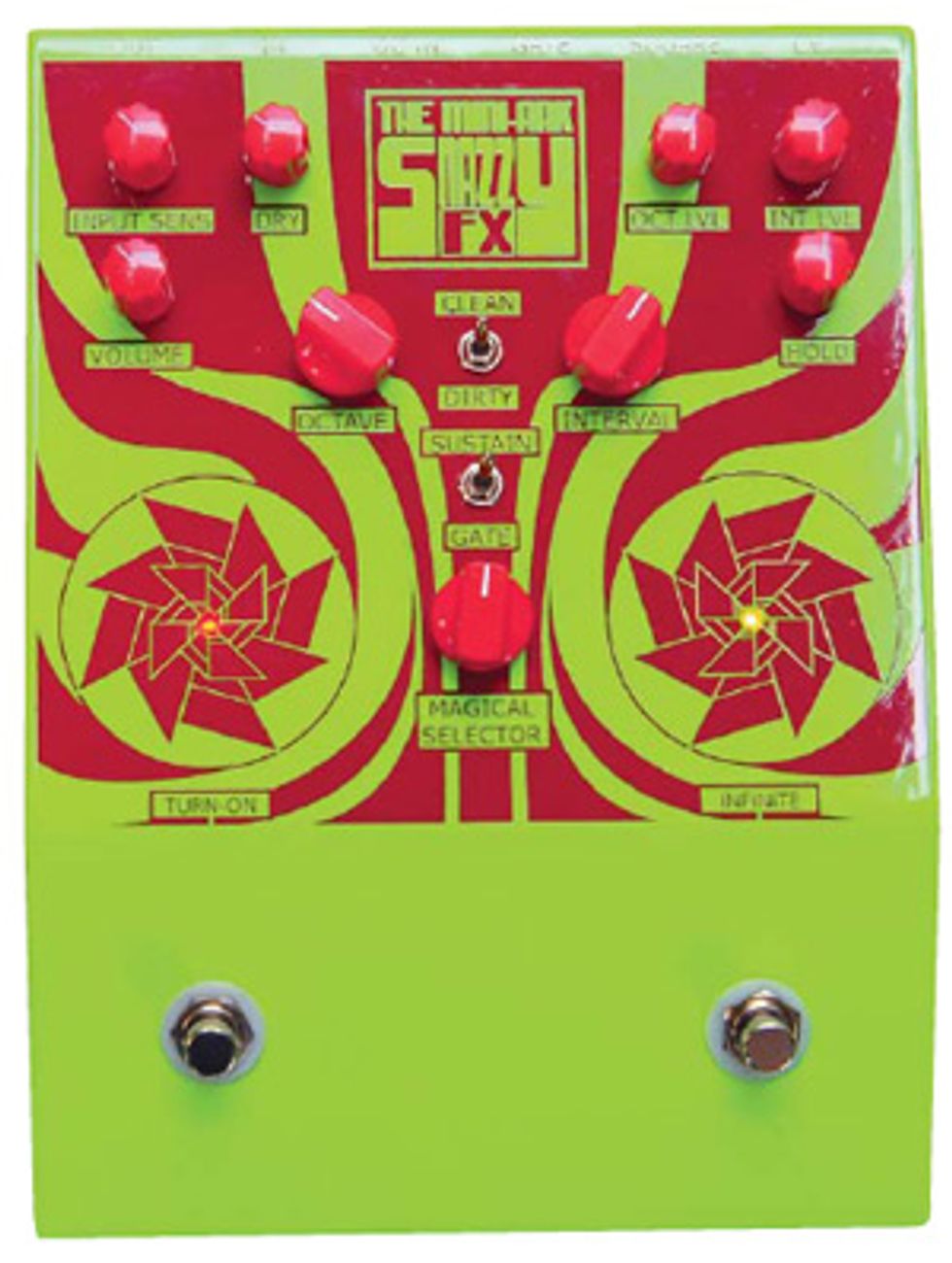
The Mini-Ark's interval VCO is a square wave oscillator that has a distinct video-gamey type of sound that is full of high and low frequency content, making it great for cutting through a mix. In addition to the root note oscillator you have a multi-position Octave selector and a multi-position Interval selector each with associated level controls. There is an array of preset intervals that can be selected including thirds, fourths, fifths, and octaves. A Clean/Dirty switch adds a slight bit of overdrive grit to the signal.
With the Sustain/Gate switch in Gate position the synth signal will stop when the pedal stops detecting a signal. With the switch in Sustain position, the synth signal will continue to oscillate until the pedal detects a new note. This is great for creating impossibly long sustaining notes. The multi-position Magical Selector is, not surprisingly, the most interesting control on the Mini-Ark. The first position is the straightforward synth pitch-shifting mode. The other settings modulate the oscillators in ways that vary from slight vibrato to unpredictable bends with crazy bursts of noise.
The Mini-Ark sounds thick and beautiful, is extremely simple to use, and has some unusual capabilities that will keep things interesting. And guitarists who work with modular synths are going to dig this unit for its ability to interface with other CV capable gear.
Pigtronix Mothership - Like the Mini-Ark, the Pigtronix Mothership is a monophonic analog guitar synthesizer—it reads a single incoming note and responds with a variety of synth tones. Pigtronix is one of those pedal makers that loves to give you control of every aspect of the effect. And for some players, just the sight of one of these beautifully comprehensive units can boggle the mind. For others, the sheer volume of controls and features adds substantial value and room to grow and learn. That's exactly what you get with the Mothership. With ten knobs, six switches, and five in/out jacks, the Mohership might seem perplexing at first glance. But the features make perfect sense with practice in practical applications. One advantage to the Mothership is that you can select between square wave and triangle wave oscillation. The triangle waveform has a much smoother, less abrasive, and less distinctive sound than the square wave, which is great for creating softer synth sounds. The Mothership has a glide control for portamento effects. You can also plug in an expression pedal to control the Mothership's whammy setting and the pedal has a ring modulation circuit. It all adds up to a ridiculous amount of sonic possibilities.
Electro-Harmonix Pog 2 and Electro-Harmonix HOG - These two well-known effects from EHX could conceivably be discussed in either the synth or pitch shifter category, but because you can range from simple pitch shifting to thick organ-like walls of sound they're very synthy in terms of capabilities.
The second incarnation of the Polyphonic Octave Generator (Pog 2) is the latest version of EHX's legendary Pog from 2005. This unit reads your signal and produces numerous octave signals that can be blended independently using sliders. This sort of design takes its cue from the stop controls on pipe organs where you adjust sliders to control the amount of air sent to the various pipes on the organ. The Pog 2 allows you to independently control the levels of octaves from two octaves up to two octaves down. You're also able to control the attack of the octaves, detune higher octaves, and process the overall sound of the unit with a completely adjustable low pass resonant filter. The Pog 2 also enables presets to be saved for performance. That's a lot of control and a ton of performance parameters. But the slider interface makes tweaking absolutely intuitive. Without the filter the Pog 2 produces a wide variety of convincing organ sounds, and can also be used subtly to thicken up your tone. You can use the Pog 2 in the same way you would use any standard octave pedal too. Using the filter gives you the ability to produce some more unique synthetic sounds and wah-wah-like tones.
The Harmonic Octave Generator (HOG) builds on the basic idea behind the Pog but includes even more controls that allow you to shape your tone even further. To start, the HOG gives you four octaves up, as well as three additional fifth interval sliders to add a bit more harmonic richness to your tone, creating an even more brilliant and convincing organ tone. The HOG also allows you to adjust the envelope of the lower pitch shifted signals separately from the envelope on the higher pitch shifted signals. For instance, you can have the beefier low octaves start immediately while shimmering higher octaves and fifths fade in slowly. The results are unique to the HOG—you can't find these types of tones in any other unit.
The HOG gives you expression pedal control over the octaves and/or filter if you opt for it, as well as MIDI connectivity and an optional performance footswitch used for storing and recalling presets. And there are several functional modes that enable bends, filter modulation, and freezing. You may have heard of the recent Freeze pedal from Electro-Harmonix. The functionality of that unit was pulled directly from the HOG's Freeze-Gliss setting. The basic idea behind the Freeze-Gliss setting is that you can capture a moment in sound and let it sustain indefinitely while you play over the top. Fans of this mode liked it so much that EHX gave it its own pedal. The possibilities are nearly endless with the HOG but, like the Pog 2, the intuitive slider interface eliminates confusion.
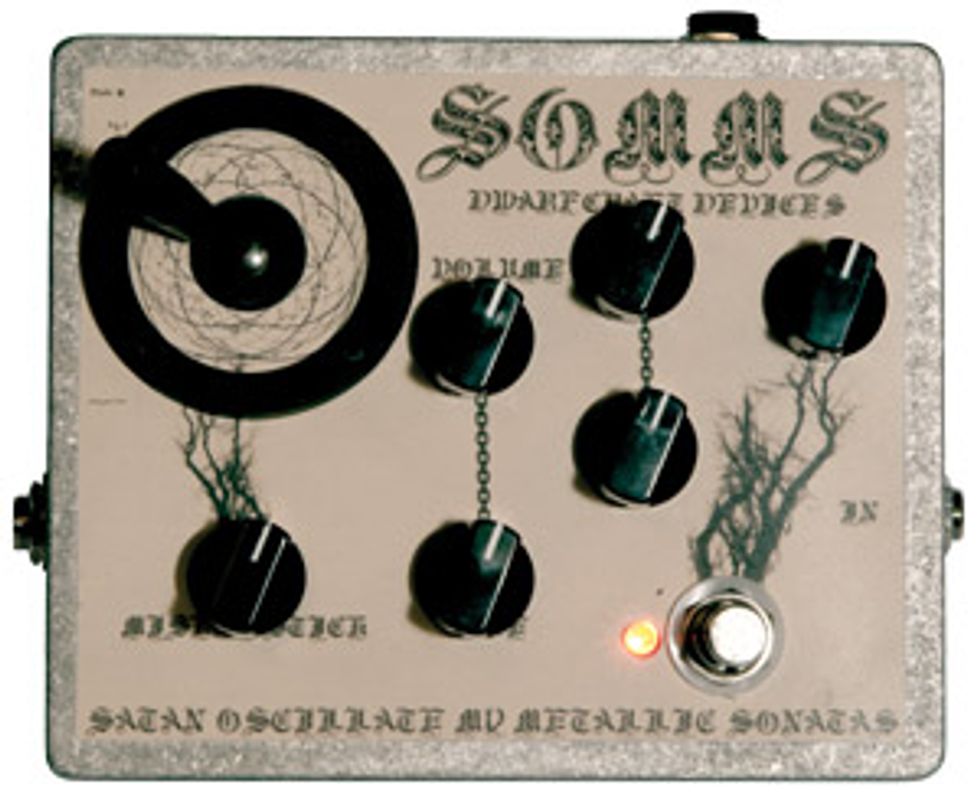
The SOMMS has four independent square wave oscillators with controls to set the tuning and the level of each. The most interesting control is an ultra-cool joystick that is large and rugged enough to be controlled with your foot. The SOMMS is most effective at creating a huge wall of unholy synth droning as a backdrop to your guitar signal.
Ring Modulators
History
Ring modulation first starting appearing in modern and experimental music in the early '50s, though it has a parallel history in the radio industry, where it was used to enable stereo broadcast of FM signal from radio waves. While ring modulators have a practical function, musicians and instrument builders alike were intrigued by the radical musical potential of the technology. Pioneer synth builder Don Buchla incorporated a simple ring-mod circuit into his groundbreaking Buchla 100 Modular Synthesizer in 1963. At about the same time, revolutionary composer Karlheinz Stockhausen began scoring music that called for numerous ring modulators to be used to process pianos, trumpets, and flutes in a live performance setting.
Where You've Heard It
During the solo of Black Sabbath's heavy metal super-hit “Paranoid," guitarist Tony Iommi makes use of a ring modulator to add a fuzzy, stuttering element to his already fuzzy tone. But its most recognizable uses are often in soundtrack work, where they lend a sci-fi aura.
How to Use It
At its core, ring modulation is an amplitude modulation effect. Without getting too technical, your input signal is essentially joined with an oscillator signal known as a carrier wave. When the signals interact some are canceled and others are enhanced. The carrier wave is generated by the ring mod effect and most ring mods have a control to set the pitch of the carrier wave. If the carrier wave pitch is lowered below the level of human hearing (~20hZ) then the resulting ring mod will produce the stuttering effect described above in “Paranoid."
LFO Off, Drive at 3 o'clock, Mix at noon, Frequency Modulation at 15 Hz
Higher pitched settings of the carrier wave produce audible resonant frequencies, like those inherent to tuned percussion instruments like bells, chimes, and pipes.
Blend at 10 o'clock, Modulation rate controlled by expression pedal.
Controls
Blend - The ring mod effect is similar to pitch shifters, delay and reverb effects in the sense that the effect is enhanced by having the dry signal present. For this reason it would be challenging to use a ring mod pedal without a blend control.
Waveform - Many ring mod pedals, such as the Electro-Harmonix Ring Thing and the Way Huge Ringworm, will allow you to determine the waveform shape of the carrier wave. This may be sine, triangle, sawtooth, square, ramp, or others. Changing the carrier waveform will allow you a greater ability to shape your tone. In the same way that a sine wave has a softer sound than a sawtooth wave, so will a sine carrier wave in a ring mod pedal produce a softer overall tone than a sawtooth carrier wave.
Pitch - The ring mod effect can be difficult to grasp and master, but it can produce tones and timbres that are impossible to achieve using any other means. Most of the difficulty in controlling the effect stems from controlling the pitch of the carrier wave. A little experience and trial-and-error experimentation with the ring mod can go a long way, and place a wealth of timbres is at your fingertips.
Some ring mod circuits like the Pigtronix Mothership with its “Intelligent Ring Mod" function, can read your guitar's pitch and use that to tune the carrier wave. Most ring mod pedals purposefully do not have this ability as the ring mod effect produces its most interesting results when the carrier wave and your incoming signal are harmonically dissimilar. On the majority of ring mods, a pitch knob or expression pedal control bends the carrier wave on a continuous plain from low to high frequencies. In other words, the possibilities are nearly endless.
Pedals We Tested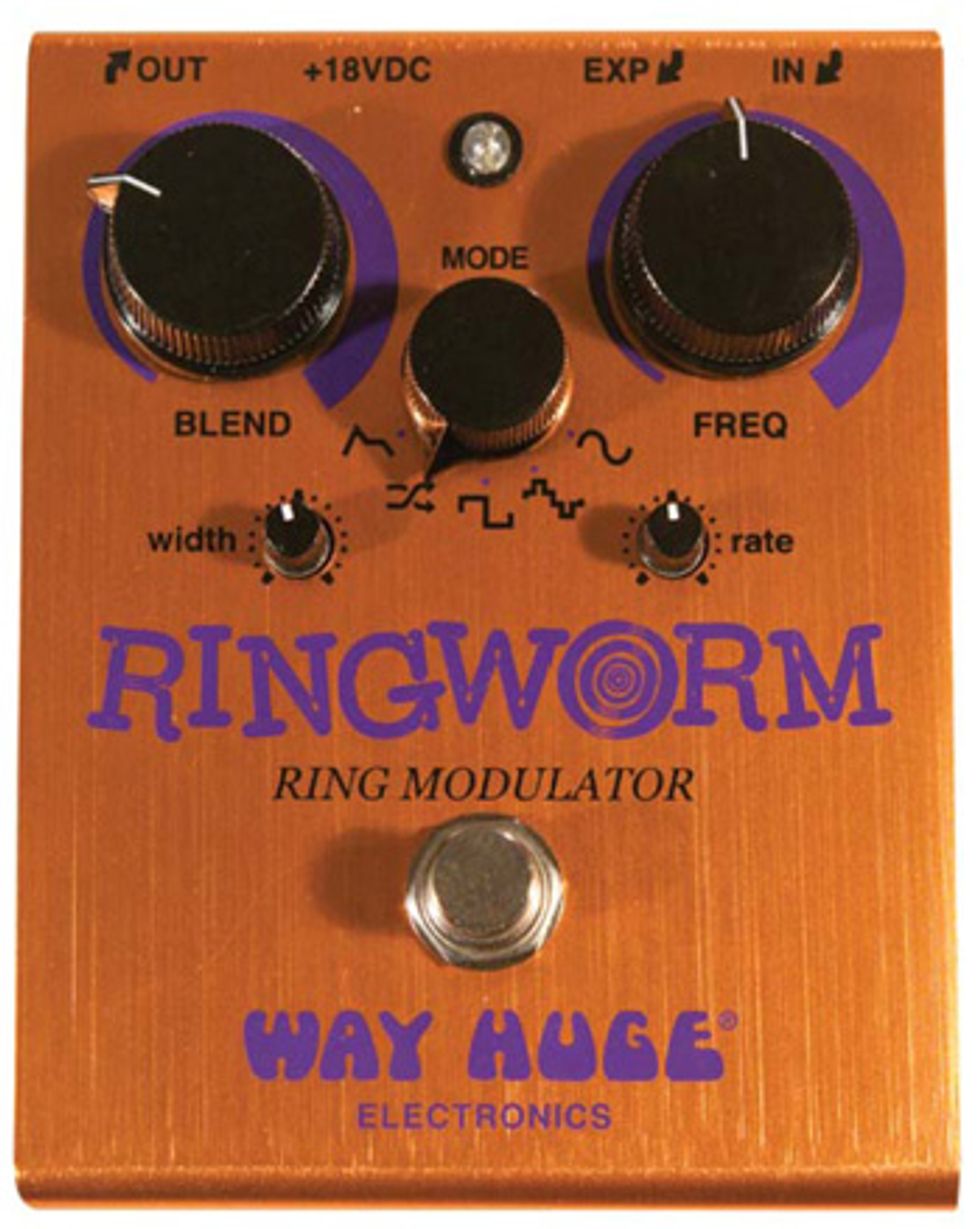
Electro-Harmonix Ring Thing - EHX has a long history in many worlds of guitar effects, including ring modulation. In 1978 they release their first ring mod pedal dubbed the Frequency Analyzer. Like the Analyzer, the Ring Thing is a ring mod, but it's also a pitch shifter, a tremolo, a rotary-speaker emulator, and more. The Ring Thing packs tons of features including numerous expression pedal inputs, preset storage, waveform selection, multi-function knob controls, and a filter.
Four operating modes set the Ring Thing even further apart and include ring mod, upper sideband modulation (processes only the high frequencies), lower sideband modulation (processes on the low frequencies), and pitch shift settings. Each of these modes enables you to modulate frequencies via the unit's range of multi-function knobs. The Ring Thing can do 8-bit style video game tones, vintage sci-fi tones, rich harmonic ring mod timbres, trippy filter tremolos, and sub-octave pitch shifting, among other sounds.
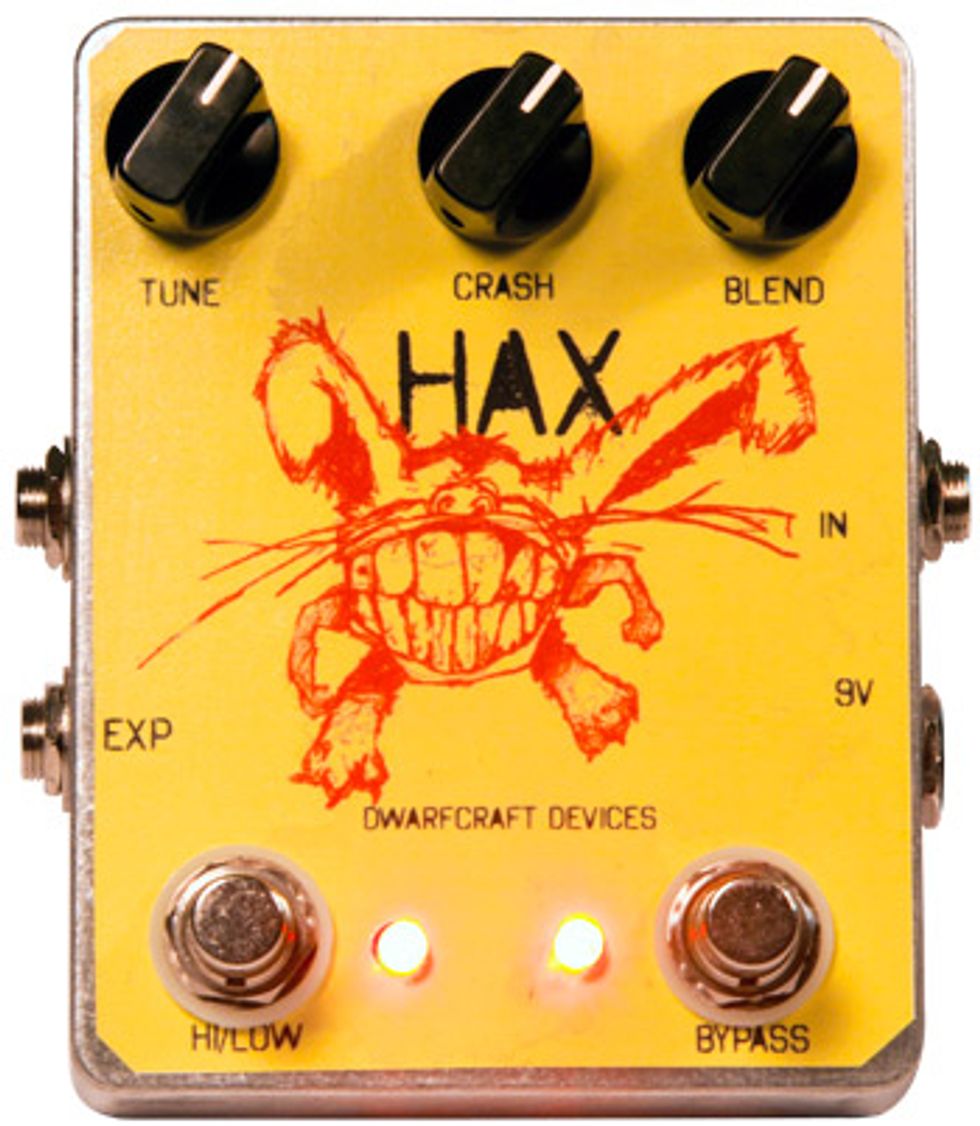
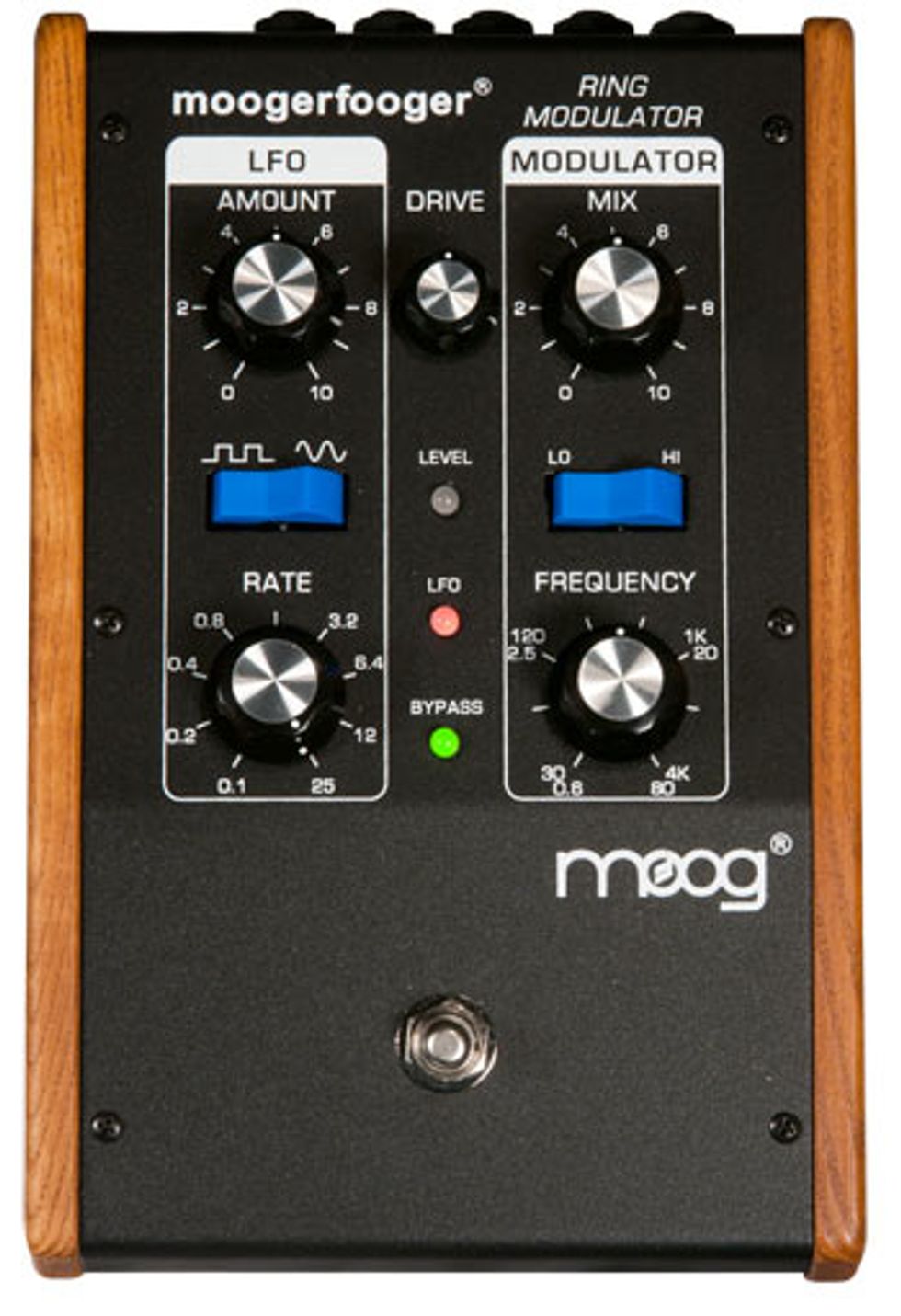
Moog's MF-102 Ring Modulator is essentially a modular synth section in a stompbox with some built-in connectivity for guitarists. The layout is very guitarist-friendly, and cool effects like bell-like tones, tremolo, spacey swirls, alien space vehicles, and beyond, are attainable through just a few intuitive knob twists. An internal LFO can be used to add movement to the carrier wave, which really opens up more swirling and bending possibilities. A drive control is also included so you can overdrive the unit introduce a bit of warm, analog distortion.
Moog's wares are typically top-of-the-line quality, bordering on luxurious, and this particular Moogerfooger is no exception. The 100 percent analog circuitry delivers superb sound quality and warm, well-defined tones that are studio worthy. The MF-102, like its modular forebearers, is built with interconnectivity in mind. Nearly all parameters are controllable via control voltage (CV), which enables you to wire the unit to a wide range of other gear, including other Moogerfoogers. When it comes to sonic clarity and definition, Moogerfoogers are king.
Z.Vex Ringtone - Z Vex's Ringtone is one of the most unique entries in the ring mod stompbox world. It's built around an eight-step sequencer that makes it possible to adjust the carrier pitch independently at each step. The sequencer scans across eight LEDs that represent each step and a tiny potentiometer under each LED to adjust the pitch of that step. You can also set the speed of the sequencer either via tap-tempo or potentiometer. A three-position switch allows you to shorten the sequence to 4 steps or completely randomize the sequencer.
The sequencer produces rhythmic changes to the ring mod setting, producing a range of sounds from telephone auto-dialer to jumbled robot babble. By turning down the ring mod mix and throwing a reverb in the chain you can use the Ringtone to create some subtle, shifting textures, perfect for that extra flavor to set your tone apart. The wet/dry mix, meanwhile can be set via a control inside the unit, which may be the only drawback of the small enclosure, but it's a more than fair trade given how many unique sounds there are within.
Destruction
History
It's inevitable that musicians will tear apart their instruments and tools in ways that will anger traditionalists. Studio engineers have taken knives to speaker cones, guitarists have driven their amplifiers well beyond their intended capacity, and yet the results of such seemingly insane activities have become cornerstones of guitar tone for generations of rockers to come. You're going to be hard pressed to find a guitarist who doesn't use overdrive or distortion in some capacity, even though distortion was considered an undesirable condition for years. What lies at the heart of these tonal exploits is the usage of noise as an attractive and desirable element of music, and that drive is as old as the electric guitar itself.
Consider these classic cases. On Link Wray's classic instrumental “Rumble" he pushed his Premier amp beyond its intended capabilities to reach a warm distorted sound. A few years later, on The Kinks' “You Really Got Me," lead guitarist Dave Davies took a razorblade to his speaker cones to achieve a gritty, brittle overdrive. Those experiments helped facilitate the development and demand for early fuzz circuits. And it was only a short time before amp makers such as Marshall were designing their gear with controls capable of intentional distortion. Now that distortion is commonplace in the electric guitar's vocabulary, a number of pedal builders have taken up the torch in developing tools that will destroy guitar signal in new and exciting ways.
Where You've Heard It
You can't talk about all-out sonic destruction without talking about Nine Inch Nails. Trent Reznor's guitar- and synth-driven brand of industrial rock utilizes noise as if it were its own instrument. On their second major album release, Broken—which Reznor once referred to as a “blast of sonic destruction"—you can hear the grinding guitar tones on the song “Wish."
The Melvins are another frequent user of extreme distortion. Their drop-tuned guitars and driving bass lines are both typically saturated to an ultra high gain tone that makes up their sludgy sound. Guitarist Buzz Osborne achieves his tone by slamming high gain amps including classic Marshall and Sunn amps with distortion stompboxes such as the Pro Co Rat.
Noise pioneers Sonic Youth even explored the use of real destruction to capture broken sounds—recording the sound of Thurston Moore's amp as it perished from a choked cooling amp in the studio to create “Scooter and Jinx" from Goo.
How to Use It
A minimal level of experience with distortion pedals is all you need to get rolling with some of the more recent entries into the world of all-out sonic assault. Typically the controls on these sonic beasts are going to be similar to an average distortion stompbox—they just have a greater capacity for gain, and a few bells and whistles to make them wail. The basic idea behind distortion is that you're turning up the signal so high that you cross the circuit's clean threshold. The resulting decapitated waveforms can have a noisier, harmonically richer content than their source.
A spongy, grainy tone likely calls for a fuzz pedal such as the EHX Big Muff. A punchy, mid-rangy tone may call for a classic tube modeler like the Ibanez Tube Screamer. For a snappy, razor sharp tone, digital distortion may be just the ticket. Most of the uber-destructive pedals we tested, like most distortion pedals, have a lot in common with one these three tonal buckets. Because the results are so wide-ranging, most of this section will focus on the seven effects we tested as a jump-off point for your experimentation.
Controls
Gain - As with every distortion stompbox, the higher the gain, the greater the clipping within the circuit. Like the gas control on your stove, a higher setting means more heat and sizzle. In this section we take the gain way beyond 11.
Tone - Most distortion pedals have some sort of equalization control that allows you to tweak the frequency response of your tone. Results may vary from throaty distortion to sparkling fuzz.
Pedals We Tested
WMD Geiger Counter - WMD has developed one of the most destructive distortion circuits in their Geiger Counter. A combination of digital and analog signal processing married to an astounding 124 wavetables gives the unit nearly limitless power to shape your tone. Controls include Gain, Tone, Bit Rate, Sample Depth, and many others. The atypical features and layout may seem confusing at first blush, but they're simply different flavors of distortion. These distortion tones have an unapologetically digital sound to them owing to the micro-processor within, but these can be the ticket to some of the most demented distortion of all.
Bit Rate and Sample Depth dictate how fast this processor analyzes your signal. Low Bit Rate and Sample Depth settings will simulate the sound of old video game consoles like the Atari 2600 and Nintendo Entertainment System (NES). And depending on the range of the Bit Rate and Sample Depth controls you'll be able to achieve tones that range from Big Muff-style gated fuzz to all-out vintage arcade noise.
Gain at Max, Tone at 3 o'clock, Sample Rate at Min, Bit Depth at Max
The 124 wavetables, selectable with a dedicated knob, allow you to further shape the sound using a range of preset sonic flavors that enhance different frequency spectrums. The Geiger Counter's versatility in the realm of digital distortion is truly unprecedented. Tasting the flavors of the Geiger Counter is often akin touching your tongue to a 9-volt battery.
Dwarfcraft The Great Destroyer - Dwarfcraft's The Great Destroyer shares a name with a Nine Inch Nails song, and it also aptly describes the primary usage of the unit. With controls like Volume, Tone, Gain, and Starve it can operate within the scope of your average fuzz pedal. And yet, like other Dwarfcraft stompboxes, it goes beyond the typical characteristics of similar pedals and into the range of all-out sonic assault that typifies a Nine Inch Nails track.
At higher gain settings the GD barfs out squealing self-oscillation. Using its Starve control you can achieve such noisy, sputtering, gated fuzz that your audience will be convinced that your rig is meeting its end before their ears.
Tone at 9 o'clock, Gain at 1 o'clock, Starve at 10 o'clock
The sonic possibilities are wide and you'll be surprised at how truly versatile this unit can be. Top it off with a huge output boost and the Great Destroyer is a titan among destructive stompboxes.
Death By Audio Total Sonic Annihilation, Apocalypse, and Robot - With a company name like Death By Audio, how could you not have a unit or two in this category of devastators? In fact, I'll mention three of them: Total Sonic Annihilation (TSA), Apocalypse, and Robot. First, TSA has a single control knob making it a fairly straightforward unit to operate, however its capabilities are beyond the limits of your average distortion pedal because it is made to work with other pedals. The pedal's send/return loop is used to take the signal from other pedal and utterly demolish it. Delay, reverb, even other distortion pedals can be placed in the loop and the resulting ultra-saturation will breathe new life into them. The single control knob sets the amount of internal gain. Oh, and there's also a skillet of hot bacon grease somewhere inside this unit because even when you back off your guitar's volume control your tone is still going to sound like sizzling meat. DBA's advice with the TSA is “Stomp on the switch and destroy the world!"
Intermodulating fuzz tones are utilized heavily in DBA's sonic weapons which makes for a lot of buzzing, high frequency content and the bubbling, out-of-control sustain that sounds like notes are folding over upon themselves. In an attempt to wrangle in such a beastly concept, DBA sometimes includes some sort of tone control that allows you to adjust the frequency response to your liking. Their next stompbox in our list and their most recent, the Apocalypse, has a control called the Sweepable Frequency Equalizer to color your tone. The Apocalypse is a five-channel sonic fuzz beast with some simple controls and a brilliantly versatile array of ear-splittingly delicious fuzz circuits. It's that simplistic versatility that makes it one of my favorite fuzz pedals to come out in recent years. With its five-position control knob you can select between scooped fuzz, harmonic fuzz, JFET fuzz, octave fuzz, and all-out splatter barf fuzz.
Drive at 11 o'clock, Waveform Shifter channel, Sweepable frequency equalizer at 3 o'clock
The next pedal from DBA is the Robot. In some ways a synth/pitch pedal, the Robot uses a lo-fi 8-bit micro-processor to make your guitar sound like a cold, synthetic…robot! The Robot starts with four modes: normal (hardly!), Octave Up, Octave Down, and Arpeggiator. Essentially, these are all bit-destructive pitch shifting modes. The pitch-shifted signal has an unapologetically vintage digital sound and can be shifted using a large control knob.
Normal setting (8-bit conversion), Control knob at 3 o'clock (pitch drop)
In Arpeggiator mode, the control knob adjusts the speed of the random arpeggiator. This makes your guitar sound like an unfortunate robot with frayed circuits, taking its last robotic breath. For its faltering mechanical tone, I've placed it here with DBA's other sonic destroyers.
Synthmonger Pulsemonger MKI - Sonically similar to the DBA Robot, but much more tonally versatile—the Pulsemonger is Synthmonger's entry in the destruct sweeps. The Pulsemonger's unpainted plain-text box, CV inputs, and controls like Pulse Width, give it an experts-only, industrial feel. Its fairly simple to grasp, however. The pedal uses low-frequency oscillators (LFOs) to hack up your guitar's incoming signal and spit it back out with blistering ferocity. There are two output controls governing the level of the fundamental frequency (tuned to the note you're playing)—exactly like your average octave pedal.
Make no mistake, though, this is no average octave pedal. An LFO shape control allows you to give the overall tone crispy definition on one hand, or the smear of molten metal on the other. LFO modulation has many different uses including tremolo, vibrato, and filter sweeps. Pulse width controls for the fundamental and sub-octave signals provide further tonal flexibility. There are numerous possibilities with the Pulsemonger but what it really excels at is fiery, gated synth fuzz.
Volume at noon, LFO Speed at 9 o'clock, LFO Depth at max, Pulse Width A at 8 o'clock, Pulse Width B at 10 o'clock
Z.Vex Machine - Part of what has garnered Z.Vex pedals a lot of space on the pedalboards of guitarists is their creative and sometimes totally off-the-wall circuits. The Machine definitely falls in both of those categories. A typical distortion pedal achieves its tone by pushing a circuit beyond its limit, consequently hacking off the top and bottom of the waveform. The Machine is the exact opposite—it distorts the signal during its quieter moments. On its own, the result is what you might expect—the dry signal somewhat preserved with an ungodly, noisy distortion sustaining throughout. This may sound absolutely disgusting—and in some ways it is—but, on the other hand, you retain a lot of dynamic expressiveness while your overall tone has the impression of total raunch. Input level, output level and a Limit control round out the control set.
Though the Machine sounds wild on its own, it also sounds great when chained with other distortion pedals. With your choice of distortion clipping the signal peaks and the Machine adding distortion everywhere in-between, the resulting tone has a truly combined coloration of two different drive tones, rather than an over-compressed sludge.


